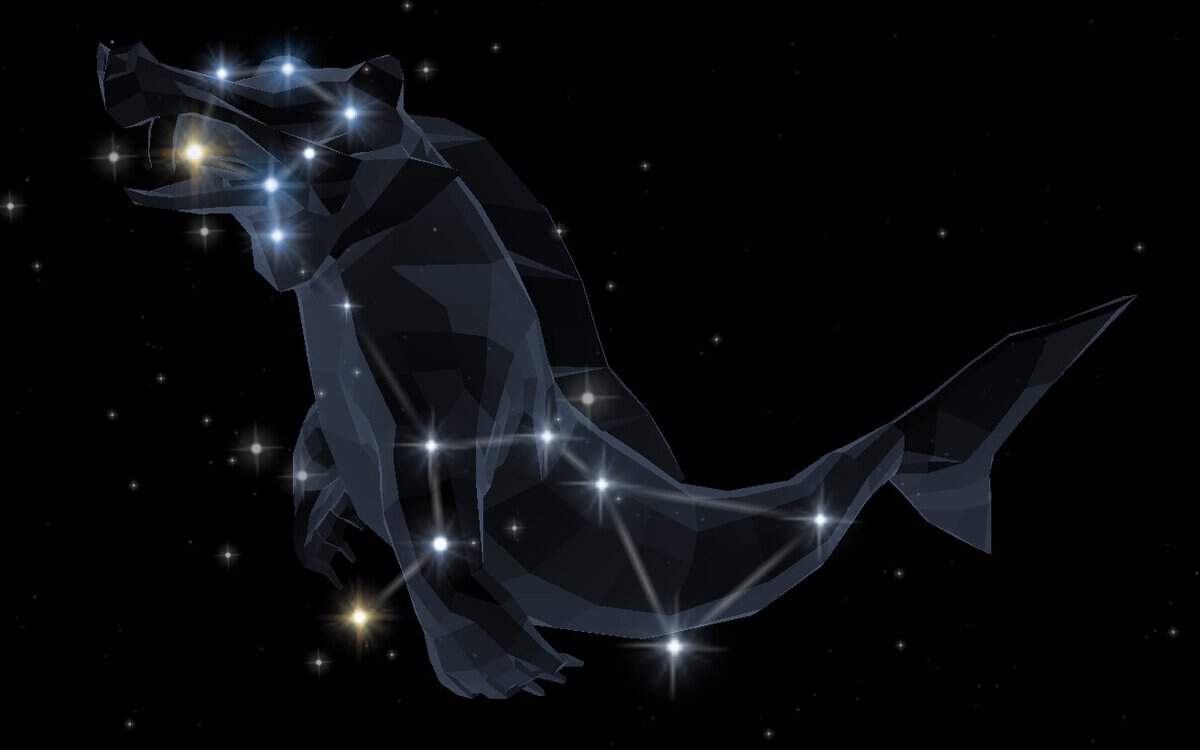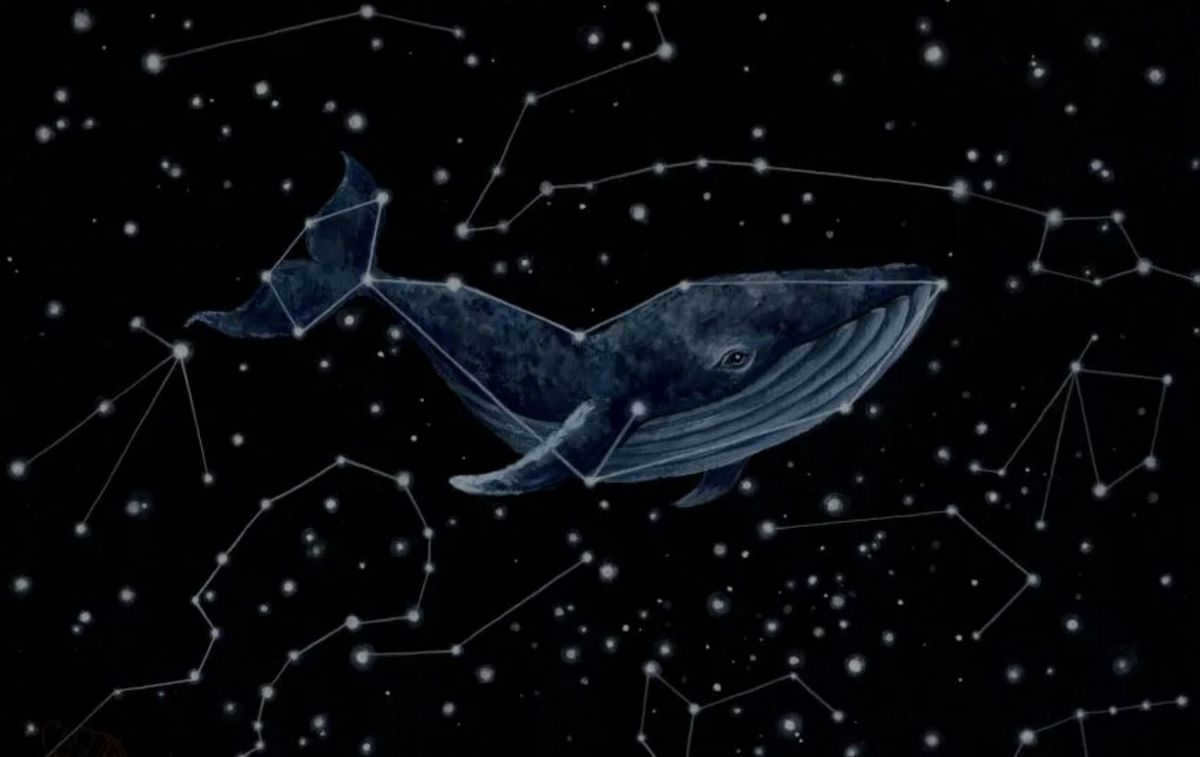
Cetus is a spacious equatorial constellation that can be found in the “water” area of the celestial sphere, neighboring Pisces, Aquarius, and Eridanus. At its core, there is a distinctive broken line that passes through the most luminous stars. As a result, Cetus has traditionally been portrayed as a creature with a sinuous tail and a gaping maw.
Discovery Background
The constellation known as the Whale has been connected to a group of marine animals since ancient times. Its name has been passed down to us from the ancient Greeks, who included this sea creature in the tale of Perseus, Andromeda, Cepheus, and Cassiopeia. Perseus circled the Whale in order to rescue Andromeda and marry her. The colossal creature never harmed the goddess and was ultimately slain by Perseus.
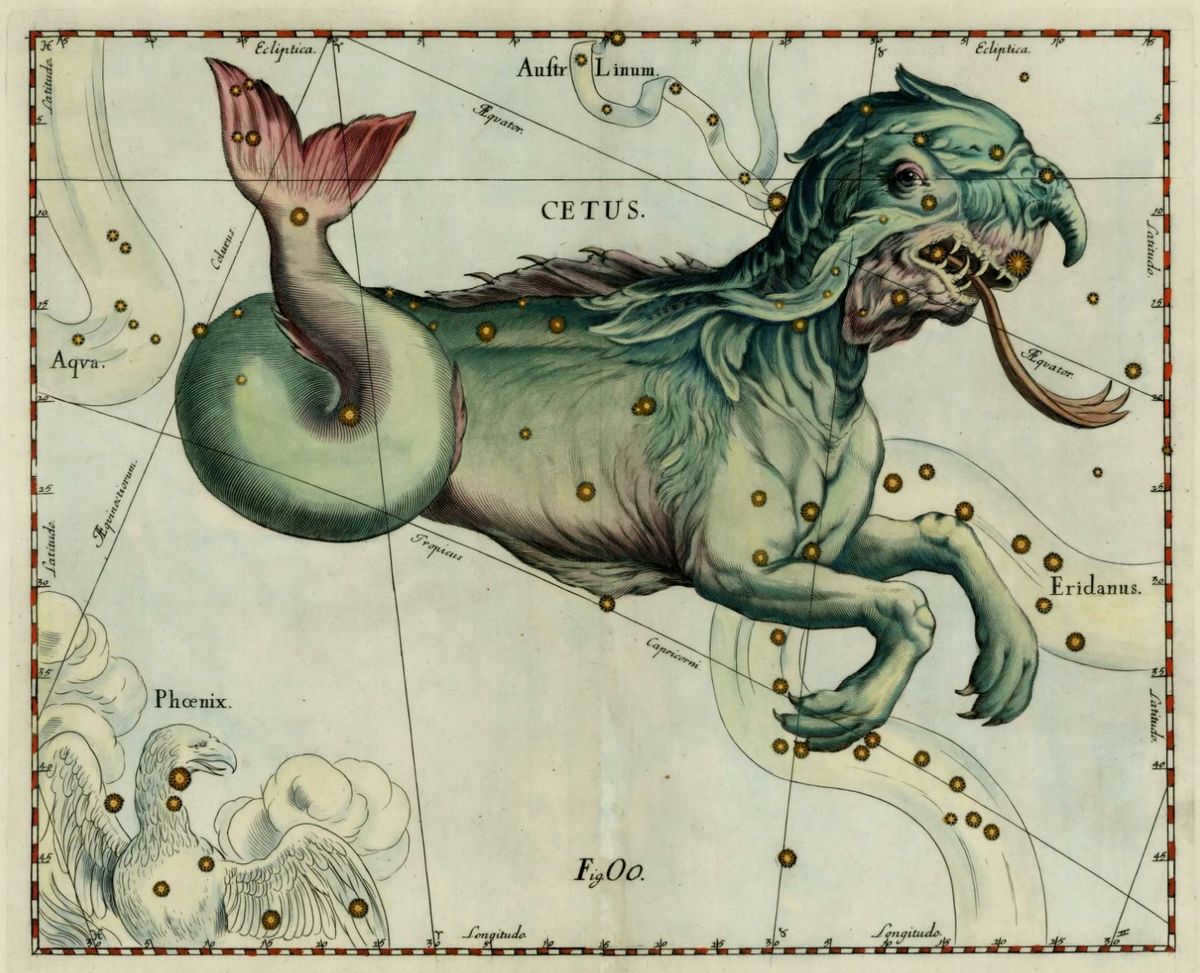
Despite being known as Cetus, the depiction of the mythical creature in the illustrations doesn’t quite match the traditional description. The ancient Greeks typically portrayed the sea monster Cetus as a combination of different animals. It had front limbs resembling paws, a massive set of jaws, and a scaly body reminiscent of a colossal sea serpent.
Keith is likely the true name of the dragon. However, it was also referred to as Orphus or Orthos. According to the myth, the dragon Keith’s skeletal remains were brought to Rome by the consul Marcus Aemilius Scaurus during the first century BC.
The Whale is the most ancient constellation, dating back to the second century when it was documented by Claudius Ptolemy in his famous catalog of the starry sky called “Almagest”.
Dimension and Position
The Whale constellation is situated in the celestial sphere between the summer and winter positions of the Milky Way. It covers a vast area of 1,231 square degrees and includes a remarkable collection of 100 stars that can be seen without the aid of any optical instrument.
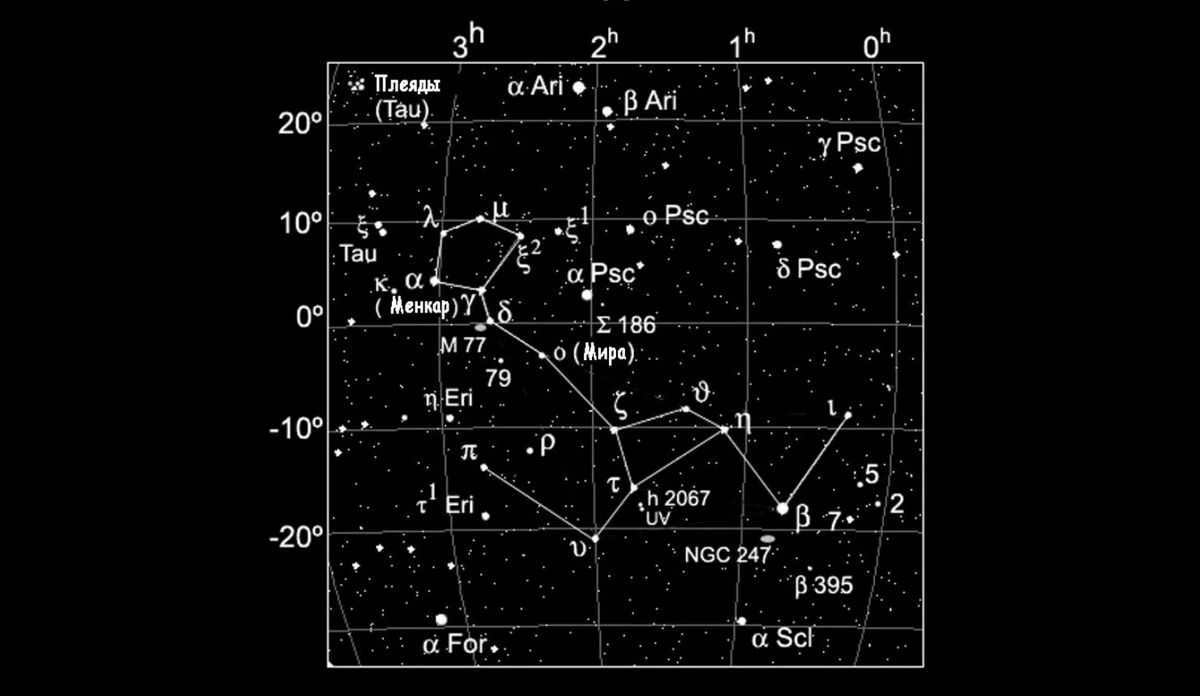
The constellation Whale is the fourth largest constellation in the night sky, covering 2.99% of the sky. It can be found in the first quadrant of the southern hemisphere (SQ1) and is visible at latitudes ranging from +70° to -90°. Other constellations that are nearby include Taurus, Eridanus, Aries, Pisces, Aquarius, Furnace, and Sculptor.
Stars’ Composition
On a night without clouds or moonlight, the constellation Keith reveals itself with over a hundred stars. However, only nine of them shine brightly with a stellar magnitude of fourth or higher, forming a distinctive and prominent chain within the constellation’s outline.
The Whale’s Alpha: Menkar
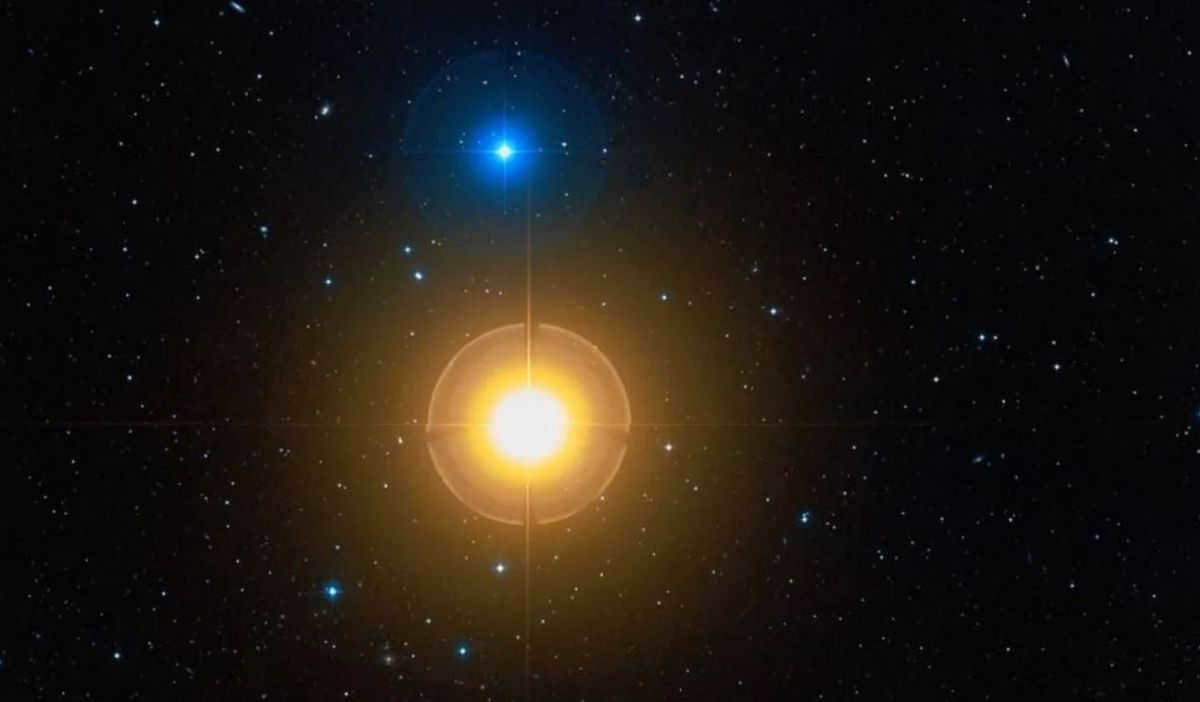
In Arabic, this constellation is known as “nostrils”. It is frequently referenced in science fiction, including the Star Trek film series.
Menkar, a red giant star, is located 249 light years away from Earth. It is currently undergoing the process of expelling its outer layers and forming a planetary nebula. Eventually, it will become a large white dwarf star. Menkar has an apparent visual magnitude of 2.54.
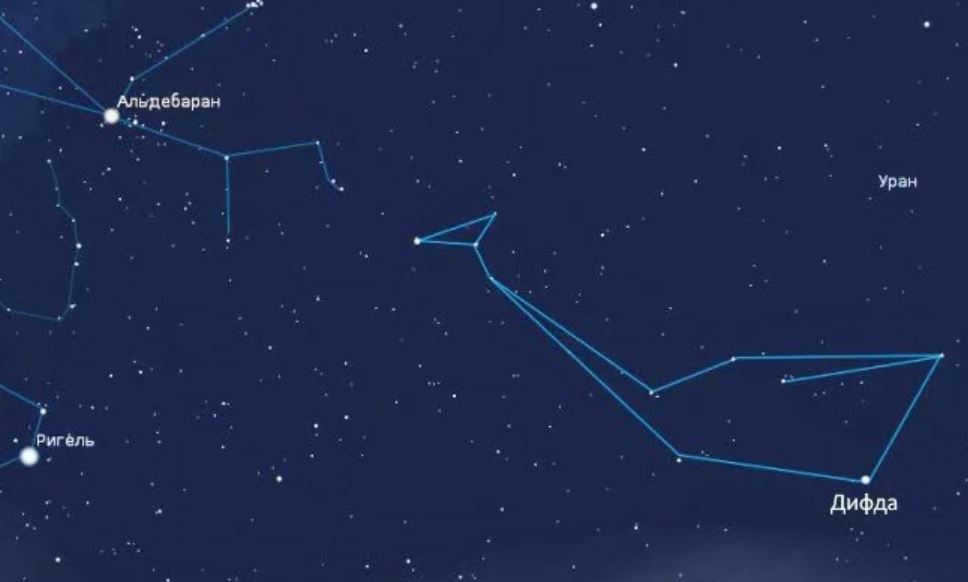
An orange giant, classified as a K0 III star, is currently undergoing a transformation into a red giant. This star has a surface temperature of 4800 K, which is slightly cooler than the Sun.
Deneb Caitos, located in the constellation, is the most luminous. It has an apparent visual magnitude of 2.04 and is situated 96.3 light years away. It is also known by its traditional names.
The name Deneb Caitos originates from the Arabic phrase al-Dhanab al-Shayon al-Janubi, meaning “the southern tail of the whale,” while Difda comes from aḍ-ḍafda’aṯ-āānī, which translates to “the second frog” (the star formation in South Fish is referred to as the first).
Mira is Omicron Keith
The variable star known as Mira, which means “marvelous” in Latin, is believed to have been recognized for its changing brightness since ancient times. However, it is also credited to David Fabricius for its discovery in 1596 and Johannes Holward for determining its period. In 1662, Jan Hevelius popularized Mira with his publication titled “Historiola Mirae Stellae – A Brief History of a Remarkable Star.”
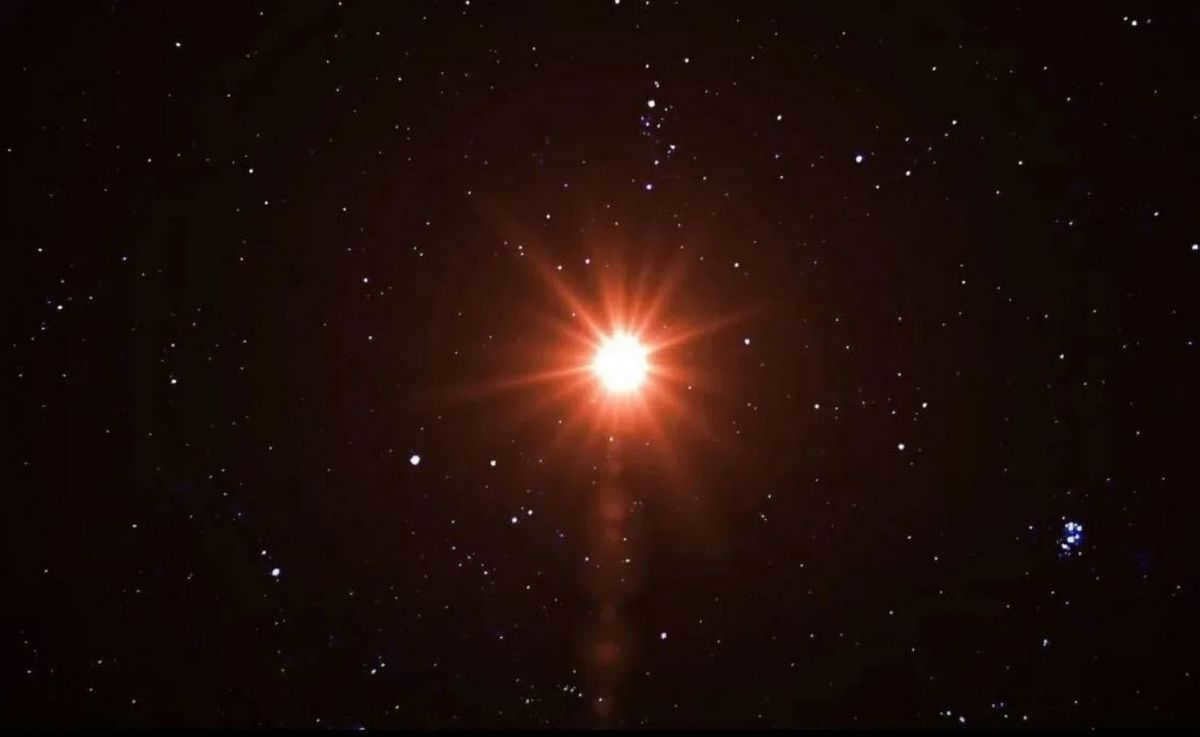
Mira’s period of variability is 332 days. It usually has a maximum brightness of 3.5, although there have been some reports of it reaching a brightness of 0.9 before dropping to a minimum of 10.1. Mira is actually a binary star system, and it was first discovered by NASA’s Hubble telescope in 1995. In 2007, observations revealed the existence of a protoplanetary disk around one of the components, Mira B. According to the Hipparcos catalog, Mira is located approximately 418 light years away.
Mira A
Mira A is an M7 IIIe spectral type red giant. It is a pulsating variable star that serves as a model for other Mira-type variables.

This category consists of approximately 6,000-7,000 identified red giant stars that exhibit variations in brightness due to surface oscillations occurring every 80-1000 days. Mira, which is believed to be around 6 billion years old, holds the distinction of being the first non-supernova star discovered, with the potential exception of Algol in the constellation of Perseus. Algol’s variability was not definitively confirmed until 1667.
Mira B
Rephrase the text, making it unique, using the English language and preserving the HTML markup:
Mira B
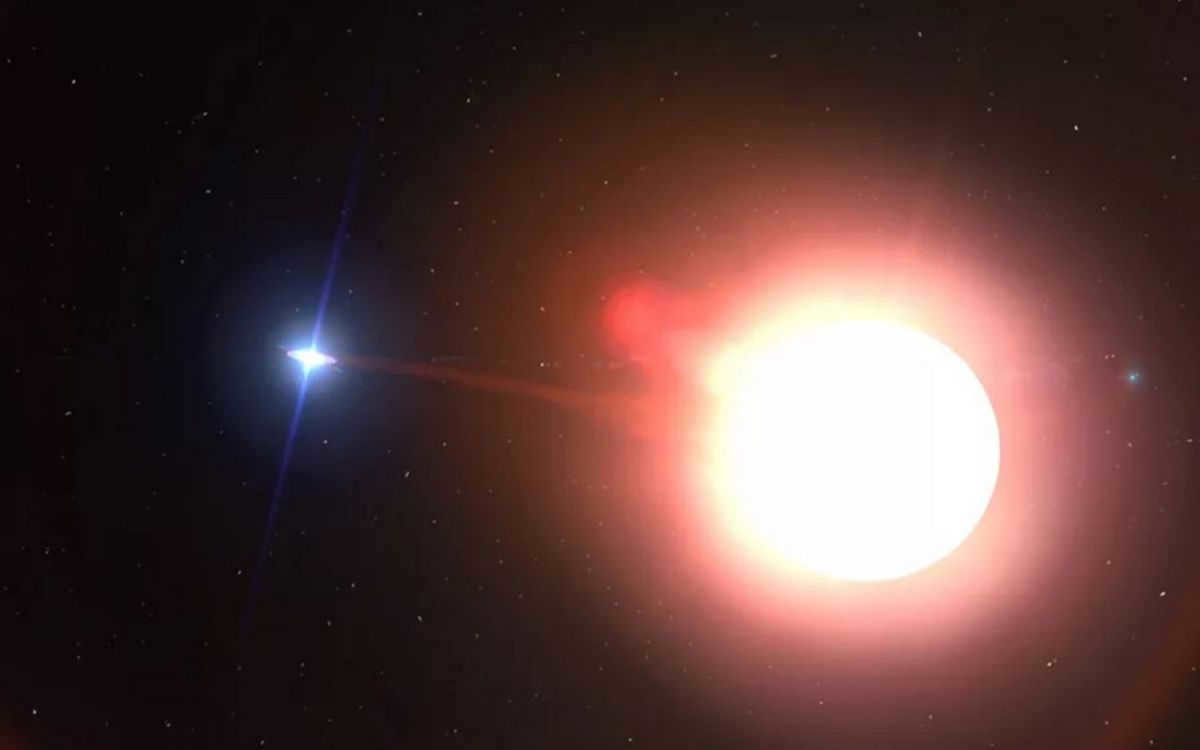
The largest constellation in the northern part of the sky is known as the Whale. This astronomical formation was given its name by the Polish astronomer Jan Hevelius, who called it “marvelous” in Latin. The Whale is actually a white dwarf star that has a high temperature and is capable of drawing mass from a red giant star. This pair of stars has a symbiotic relationship and is the closest to the Sun.
One of the most remarkable stars within the Whale constellation is Mira B. This star is a periodic variable star, meaning its brightness fluctuates over time. However, it can only be observed with special equipment during specific stages of its cycle. Mira B has a rotation period of 332 days. The variability of this star was first documented by David Fabricius, a German astronomer, in 1596. Fabricius initially believed it to be a new star until he observed it again in 1609.
Tau Kita
Tau Kita is a G8.5 type cold dwarf star that has an apparent magnitude of 3.5. It is located at a distance of 11.9 light-years from our system, making it one of the closest stars to us. With a mass that is 78% of the solar mass, it is one of the few stars that are smaller than our sun but can still be seen with the naked eye. Additionally, Tau Kita has a low metallicity and its luminosity is only 55% of the solar luminosity.
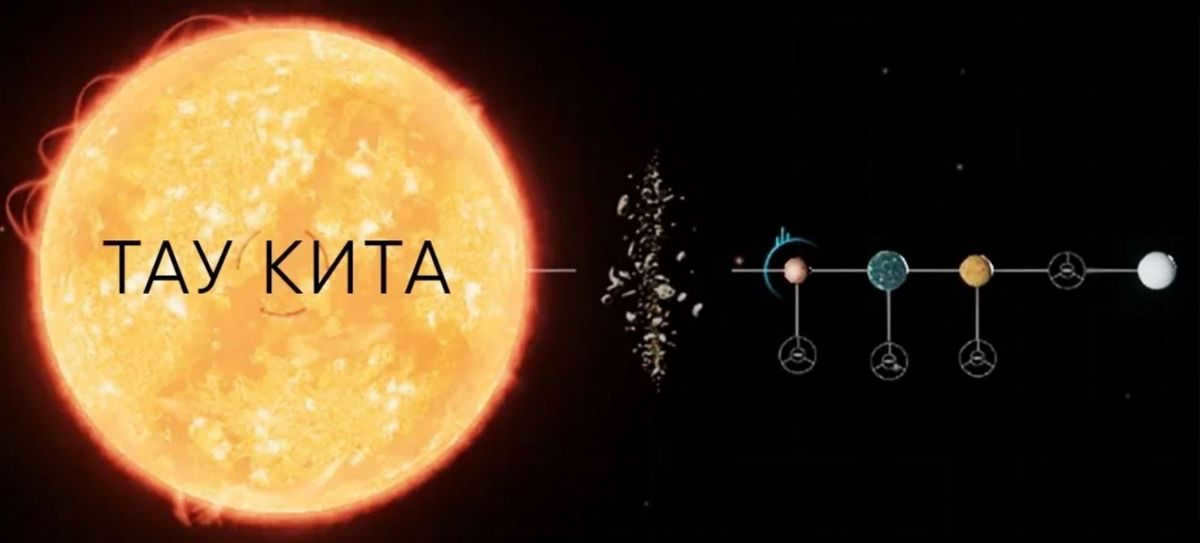
The constellation of Cetus, commonly known as the Whale, is the largest constellation in the northern part of the sky. It is home to several notable stars, including Tau Kita and Epsilon Eridanus. These two neighboring stars, which bear a striking resemblance to our own Sun, were selected in 1960 for a groundbreaking SETI experiment aimed at detecting signs of extraterrestrial life. Unfortunately, despite extensive efforts, no positive results were obtained from this experiment.
Keith’s UV – Gliese 65
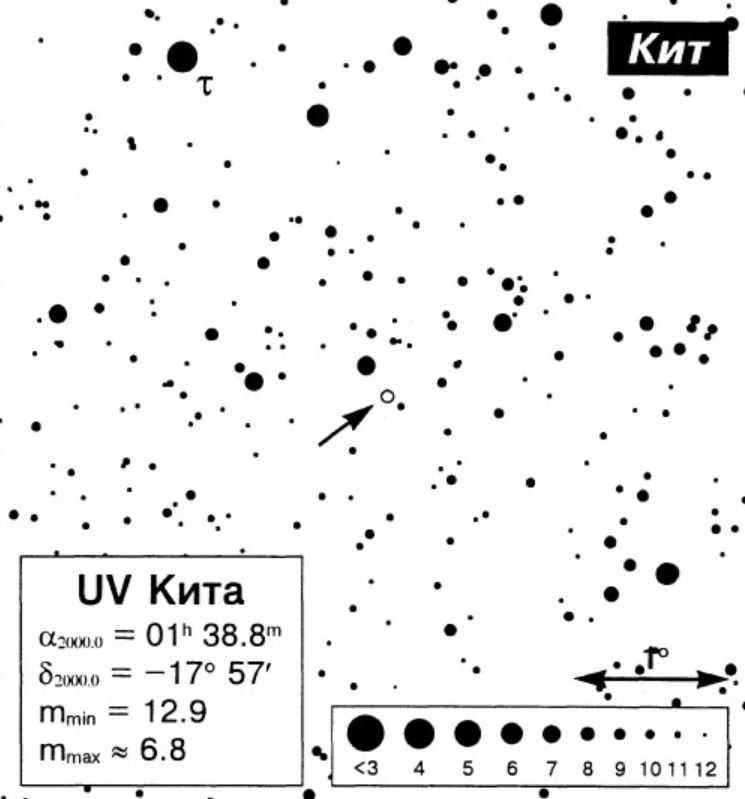
A star that can change its brightness by five magnitudes! UV Kita exhibits rapid fading after such outbursts. It is possible that the flares on UV Kita are similar to those that occur on our Sun, although on a smaller scale.
According to Academician V. A. Ambartsumyan and his supporters, the outbursts of stars like UV Kita may be linked to the release of small amounts of “pre-stellar matter” from their interiors. However, our understanding of this phenomenon is still limited, and further research is needed to make definitive conclusions. Based on certain characteristics, UV Kita-type stars are believed to be young stars.
A star with three exoplanets that is worth noting. It is situated approximately 110 light-years from Earth, making it invisible to the naked eye.
Celestial Bodies
In the constellation of Keith, there are around 50 galaxies that are brighter than a magnitude of 13 stars, as well as 307 galaxy clusters from the AGC (Abell) and Hickson catalogs, each of which represents an incalculable number of galaxies.
Spiral galaxy M77
M77, also known as Arp 37 and NGC 1068, is the most well-known galaxy located in the constellation Keith. It was first observed by Pierre Mechene in 1780 and later categorized by Carl Seyfert in his 1943 catalog as a type of disk-shaped galaxy with a remarkably bright core, which eventually became known as Seyfert galaxies.
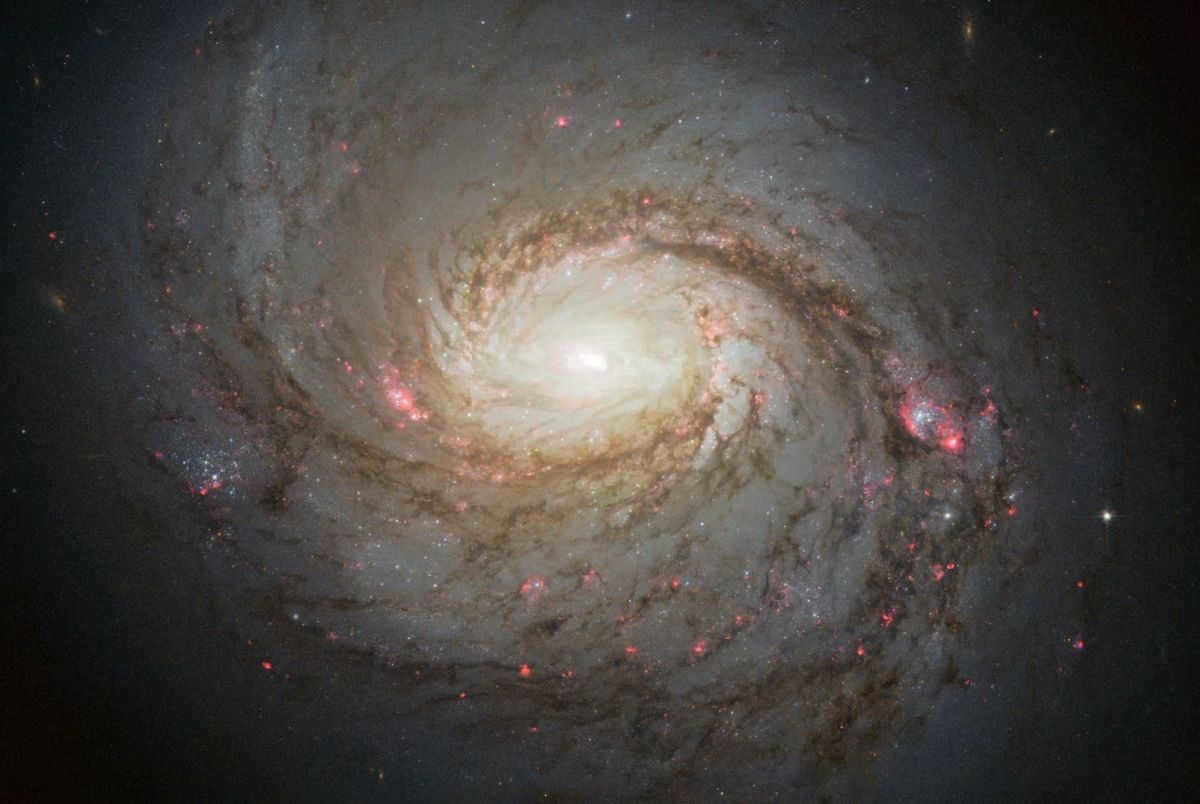
There are two distinct varieties of Seyfert galaxies: type 1 exhibits the rapid rotation of gases around the nucleus, indicating the presence of a black hole, whereas type 2 Seyfert galaxies display a deceleration of gas clouds as they move further away from the center. M77 was previously classified as a type 2 Seyfert galaxy until 1985 when gathered data suggested the possibility of a type 1 nucleus being concealed. Consequently, certain astronomers propose that the discrepancy in classifying such galaxies stems from the perspective from which they are observed.

In 1913, M77 was observed by Vesto Slifer, a scientist at Lowell Observatory, who noticed a significant redshift. This discovery played a crucial role in the development of the expanding universe theory.
M77 is listed in catalogs as being 7’x6′ in size and having a stellar magnitude of 8.8. Lard Greystoke, a member of a forum, observed M77 using a ten-inch Coulter telescope and described it as follows:
“Located in the tail of China near the star Delta, M77 appeared to me more like a compact globular cluster rather than a galaxy. It had a round glow with high surface brightness that could easily be seen through an 80-millimeter finder, with a nearby star also visible.”
NGC 1055.
NGC 1055 is a spiral galaxy that features a unique SBb-type junction and a distinctive rib that is turned toward us. With a brightness magnitude of 10.6m, this galaxy has apparent dimensions measuring 7.6′ × 2.7′. It has been the subject of extensive observation by NASA’s Hubble orbiting telescope. However, for amateur astronomers observing from Earth, only certain details are visible, such as the shape, size, and the presence of a dark band of gas and dust that runs through the central part of the galaxy.
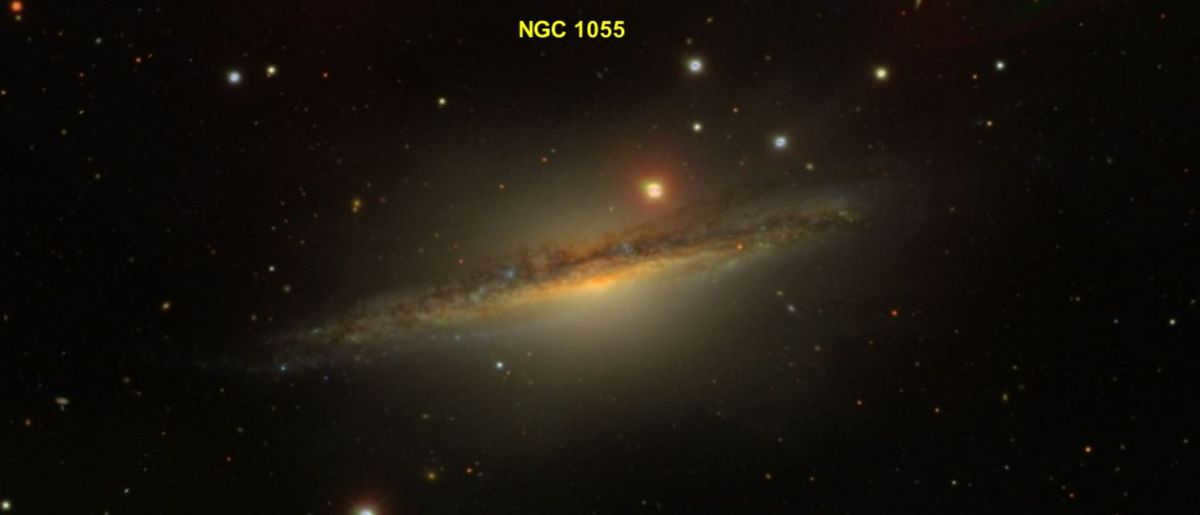
Astronomers often seek out and observe the Whale constellation in conjunction with M 77, which is located just half a degree away. These celestial objects can be easily viewed together in most telescopes, and when using the right eyepiece, they create a stunning pair. Telescopes with medium aperture can even reveal some variations in the halo, adding to the beauty of the observation.
NGC 246 – Skull Nebula
The Skull Nebula, also known as NGC 246, is a planetary nebula that is often referred to as Pac-Man due to its distinctive shape. It has a luminosity of 10.1 and a size of approximately 5’x4′. Based on its distance from the star, scientists estimate that its true diameter is around 2 light-years. While it may not be as bright as some other nebulae, the Skull Nebula still has a beautiful, round diffuse glow that is reminiscent of the Owl Nebula in the Big Dipper. Within its disk, you can find 3-4 fairly bright stars. To fully appreciate the intricate details of this nebula, a large telescope is required.
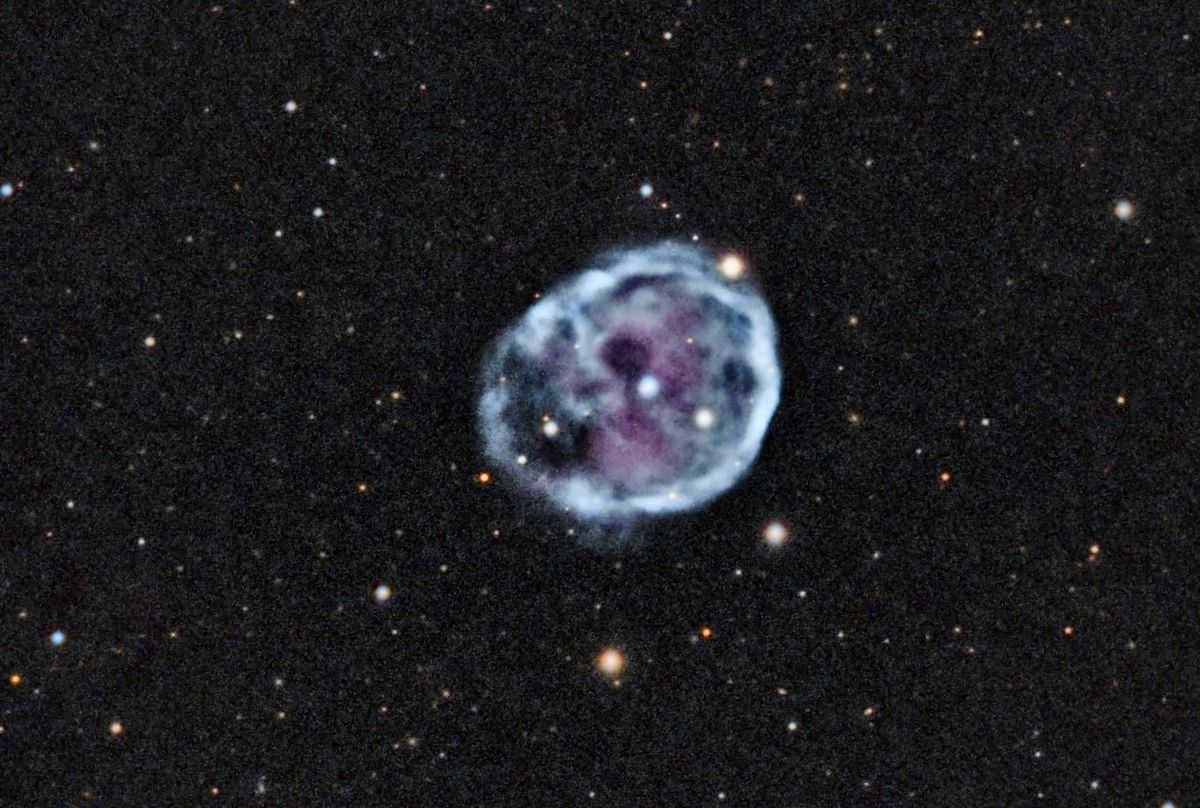
NGC 246 might go unnoticed at first glance, as the observer’s attention can be drawn to a tiny “stellar cluster” that is shining through the celestial cloud. When observing NGC 246, one can try using various eyepieces to determine the optimal level of magnification for a thorough examination. It is crucial to find a magnification that maintains a dark background and provides sufficient contrast, ensuring that the object’s intricate features are not obscured by the sky.
The larger spiral galaxy NGC 1087, which features a connecting point, has an apparent dimension of 3.9′ × 2.3′ and shines at a magnitude of 10.8m. When observing through a 10-inch telescope, not only can we spot the nebular cloud, but we can also discern the intricate spirals and uneven composition of the galaxy on its outer edge.


NGC 1090 is a faint (11.8m) spiral galaxy that has a size of approximately 3.9′ × 1.8′. Although it has a similar size, NGC 1090 has a lower surface brightness compared to NGC 1087. Even with a 10-inch (or 250 millimeter) telescope, it is extremely difficult to observe any details in this galaxy. Both galaxies are located less than 1 degree to the west of the galaxy Kita A (or M 77).
NGC 1073.
An incredibly stunning spiral galaxy featuring a SBc-type junction. Its dimensions are 4.9′ × 4.3′ and it boasts a brightness of 10.8m. This particular galaxy is positioned in a way that it is facing towards us, making it a prime subject for capturing breathtaking astrophotography images.
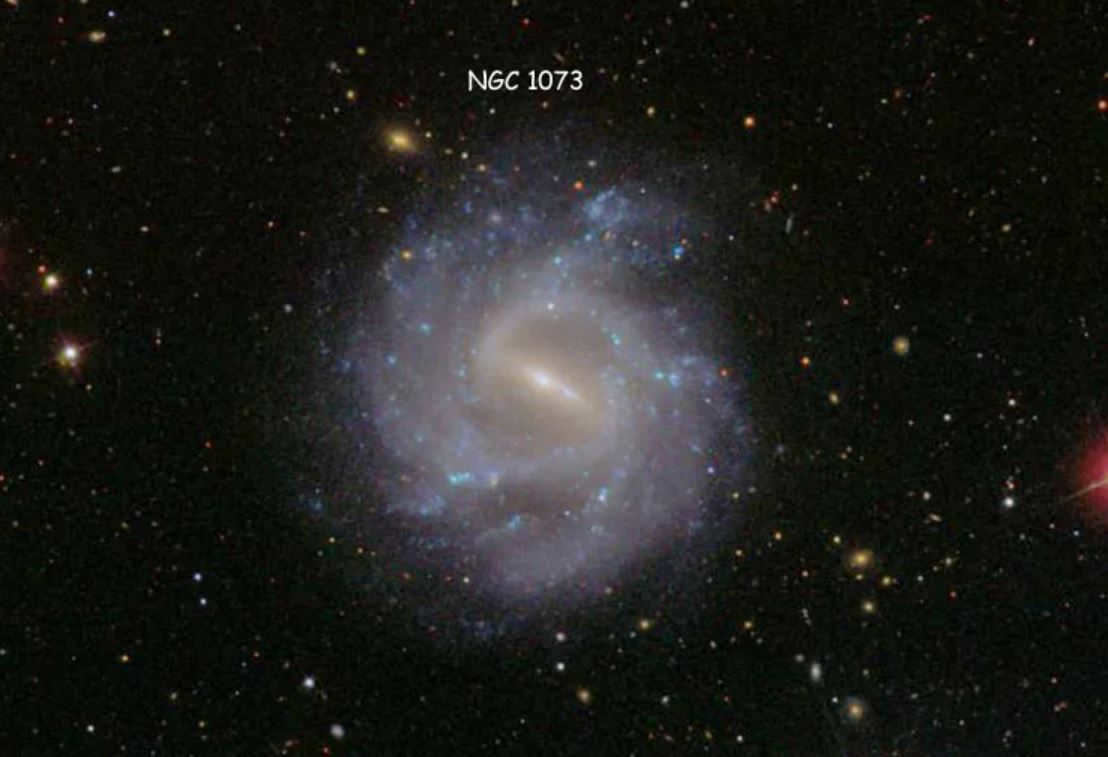
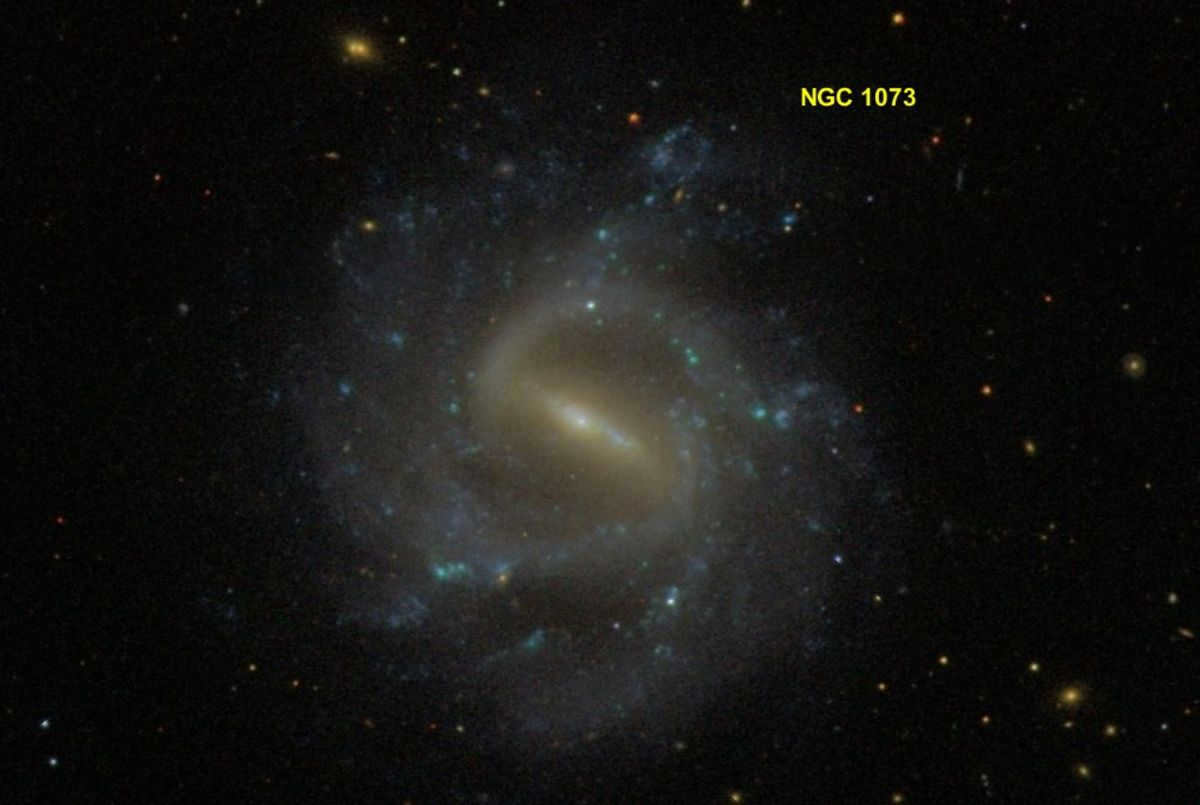
NGC 936 is a type of galaxy known as a lenticular galaxy
When we look at the other galaxies in the constellation of Cetus, NGC 936 appears to be quite humble and unpretentious in comparison.
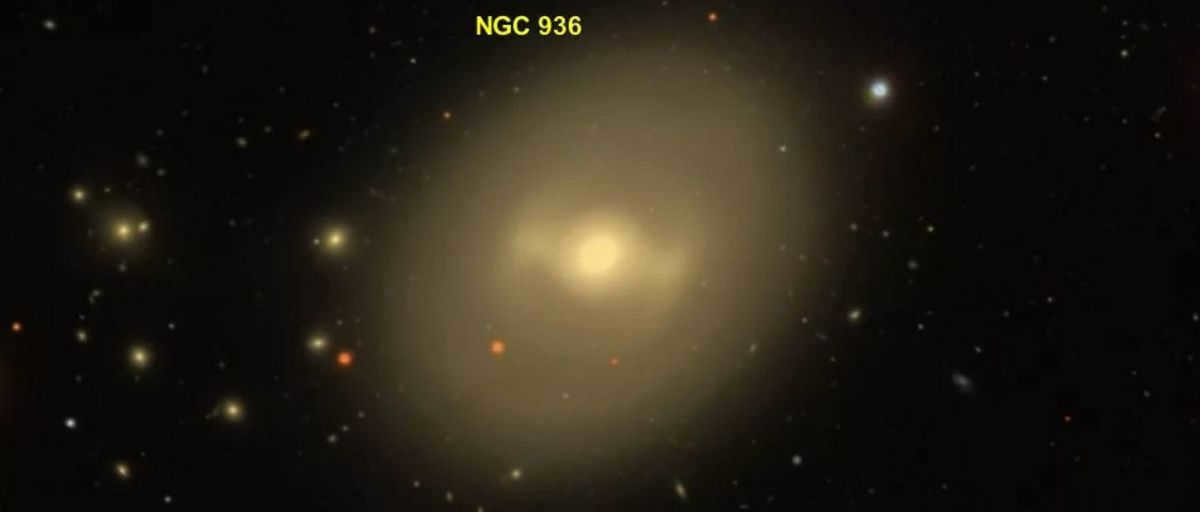
An extensive examination uncovers a diverse composition within its core, whereas the outer region appears uniformly dull and overcast. The luminosity of this galaxy measures at 10.2m, and it possesses an apparent size of 4.7′ × 4.1′.
The NGC 864.
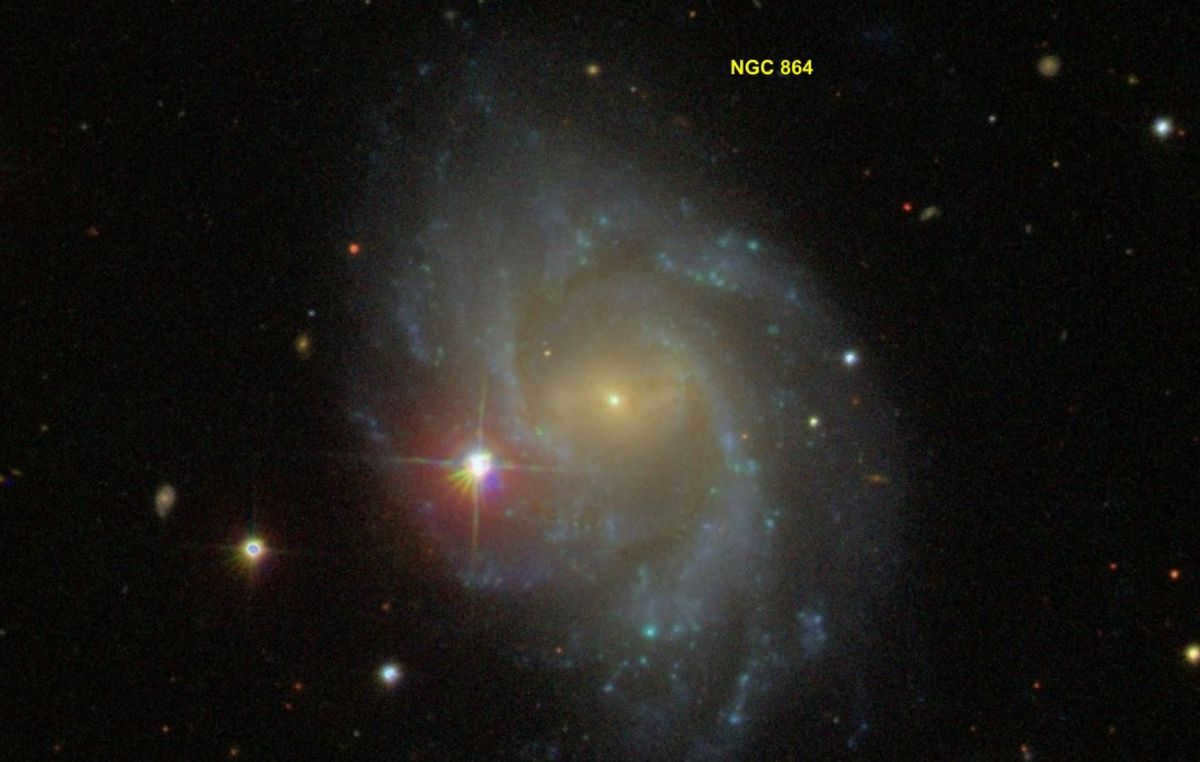
The largest constellation in the northern part of the sky is known as the whale. It is a spiral galaxy located separately from other celestial objects in the constellation Keith. With a brightness of 11m and an apparent size of 4.7′ × 3.5′, it is a prominent feature in the night sky.
Although there is a bright star in the foreground of the galaxy, it is not part of the galaxy itself. Instead, it is optically aligned with the galaxy from the perspective of an observer on Earth. The galaxy, known as NGC 864, has a low surface brightness of 14m, making it difficult to see with the naked eye. However, with the use of high-quality optics in astrophotography, more details can be captured and the galaxy can be seen in various color shades.
Spiral galaxy NGC 1042
Located in the constellation Keith, there is another region densely populated with galaxies. As you peer through the telescope’s eyepiece in search of one, you may stumble upon another galaxy or even several more in close proximity. Despite its relatively low brightness at 11m, NGC 1042 is positioned in such a way that it faces the observer from Earth, allowing for the observation of its distinct spiral structure and other notable features. With visible angular dimensions measuring 4.3′ × 3.6′, NGC 1042 showcases a high surface brightness at 12.6m. It’s worth noting that a neighboring galaxy, NGC 1084, also adds to the beauty of the view.
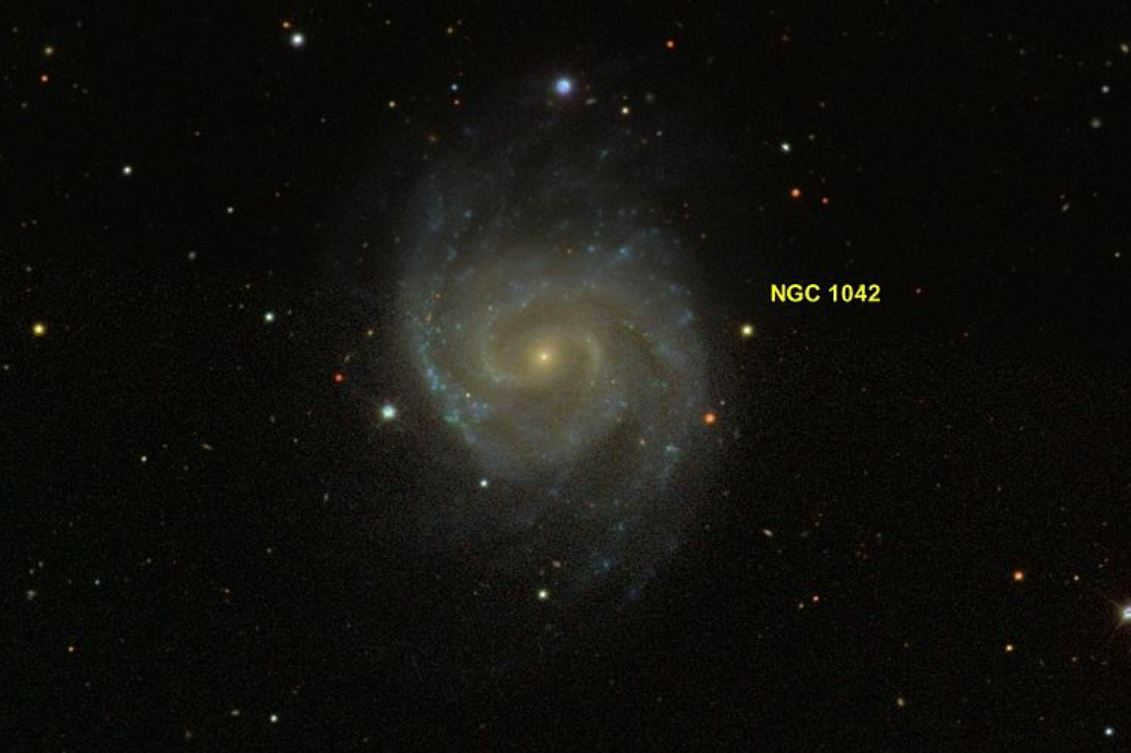
NGC 988: A Magnificent Spiral Galaxy
NGC 988 is situated just a little south of its predecessor. Acting as a fantastic guide for locating and observing, there is a brilliant star (with a brilliance of 7.1m) in the foreground. This galaxy has a relatively modest size, measuring 4.1′ × 1.6′, and boasts an apparent magnitude of 11m.

NGC 584 and NGC 586: A Duo of Galaxies
NGC 584, the more luminous member of this pair, is classified as an E4-type elliptical galaxy. It possesses a magnitude of 10.5m and appears to be 4.1′ × 2.0′ in size. Adjacent to NGC 584, although only visible optically, is the spiral galaxy NGC 586. This galaxy has a magnitude of 13 and is not easily observable even with amateur telescopes as small as 150 mm.
Both NGC 584 and NGC 586 are located within a two-degree radius of the prominent star θ Cet, which shines with a brilliance of 3.6m. In more advanced telescopes or through astrophotography, it is possible to capture images of several other fainter stars in this region. Additionally, there are approximately 30 galaxies, with magnitudes of up to 14, similar to the Cetus 1 cloud.
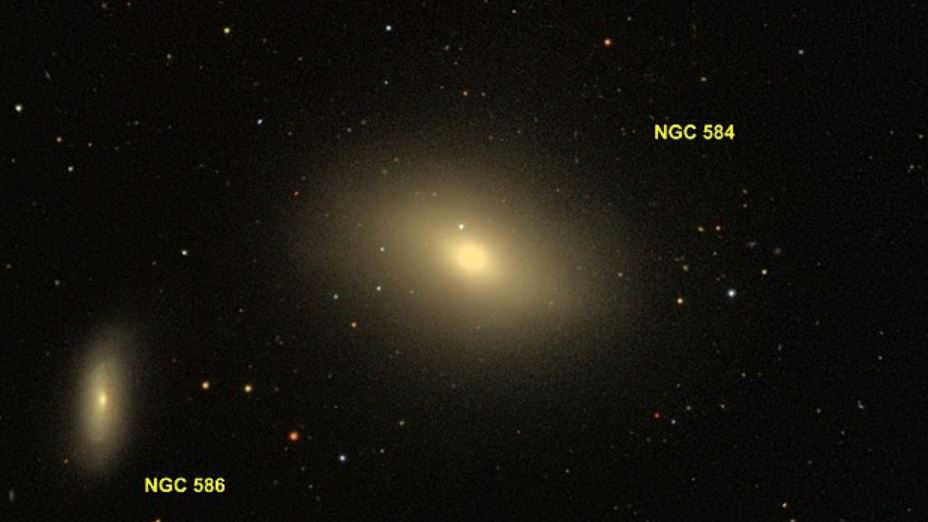
The constellation also possesses a few noteworthy meteor streams:
- The October Citids – A meteor shower of moderate intensity. It remains active from the 13th to the 24th of October, with its peak occurring on the 20th of October. The zenith hourly rate (ZHR) is approximately 10. However, in 1935, as many as 100 meteors per hour were observed!
- The Tau cetids – This meteor shower is not very visible. It is active from the 18th of June to the 4th of July, reaching its maximum on the 27th of June. The zenith hourly rate (ZHR) is about 4.
- A pair of less conspicuous streams – “Etha-cytids” active in October and “Omicron-cytids” active in May.
Ways to view the constellation in the celestial sphere
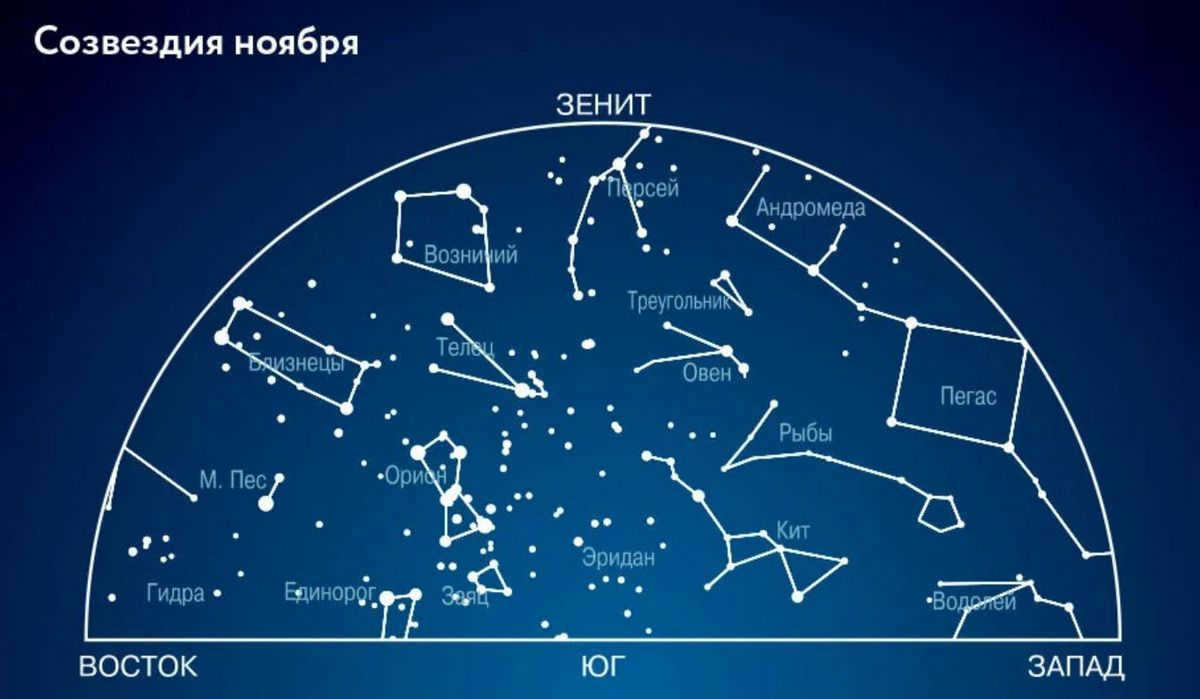
The constellation Whale can only be observed in the central and southern regions of Russia. It is not visible in the rest of the country. The most favorable period for its observation is from October to November. Whale starts in the east with a large elongated polygon and ends in the west with a large triangle.
In autumn, Whale is located high above the northeastern part of the horizon. There are no prominent stars in the constellation, but Taurus, whose brightest star, Aldebaran, is to the right and below Whale. To the right of Taurus, the constellation Orion rises in the sky.
During the summer months, the constellation ascends to a high position in the celestial sphere and passes through the meridian at midnight. At this specific time, Taurus can be observed to the right and slightly below. Directly below Taurus, the faint constellation Aries becomes visible. Positioned to the left and below, the constellation Pegasus denotes the location of Keith with the diagonal of its “Square”.
Watch the Video: Omicron of the Whale
Q&A
Once hydrogen, helium, and potentially carbon and oxygen are depleted in the core of a star, it undergoes a supernova event, expanding dramatically and transitioning off the main sequence in the Hertzsprung-Russell diagram, ultimately entering the instability band. Internal physical processes cause the star to pulsate with a specific frequency.
Regrettably, UV Cet flares manifest in an entirely unpredictable manner, making it possible to witness these bursts even with high-quality binoculars.

The rightful ownership of the equatorial region, situated within the celestial section known as the water part of the sky, is attributed to the constellation Keith. Covering a vast expanse of 1,231 square degrees, it secures its place as the fourth largest area within the cosmos.
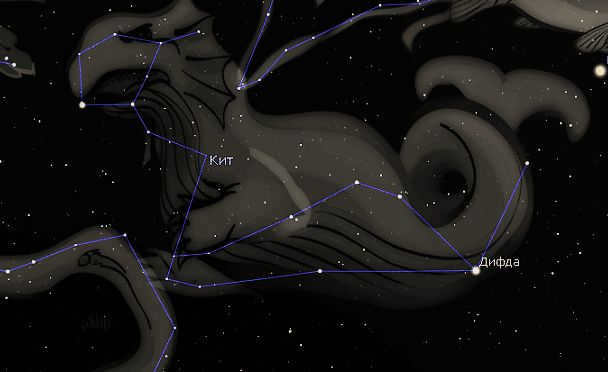
The legend of the constellation Whale
According to the myth, the distant Whale is actually the fearsome sea monster Cetus. Poseidon had sent him to capture Andromeda, but Perseus bravely defeated him and saved the beautiful princess. In recognition of his valiant service, the king of the sea immortalized the whale in the stars.
Despite its name, the shape of the constellation does not resemble a sea creature in any way. However, it was given this name based on its mythical origins.
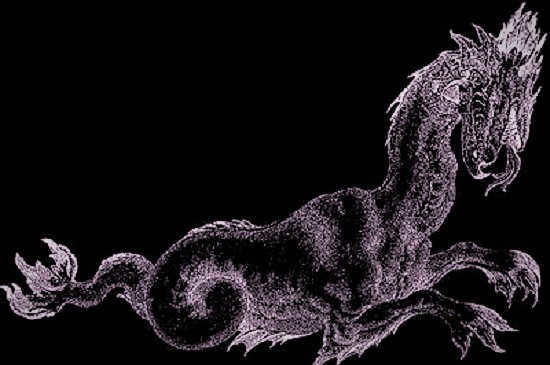
The most brilliant celestial bodies of the whale
Among these are Alpha. Menkar and Beta. Diphda.. In fact, they are renowned as the red and orange giants.
Diphda is also known by its Arabic name Deneb Kaitos.
Also included in the roster of luminous stars in the constellation is Omicron Ceti, a binary system Mira.. Incidentally, it was christened after a class of variable luminaries – the Mirids.
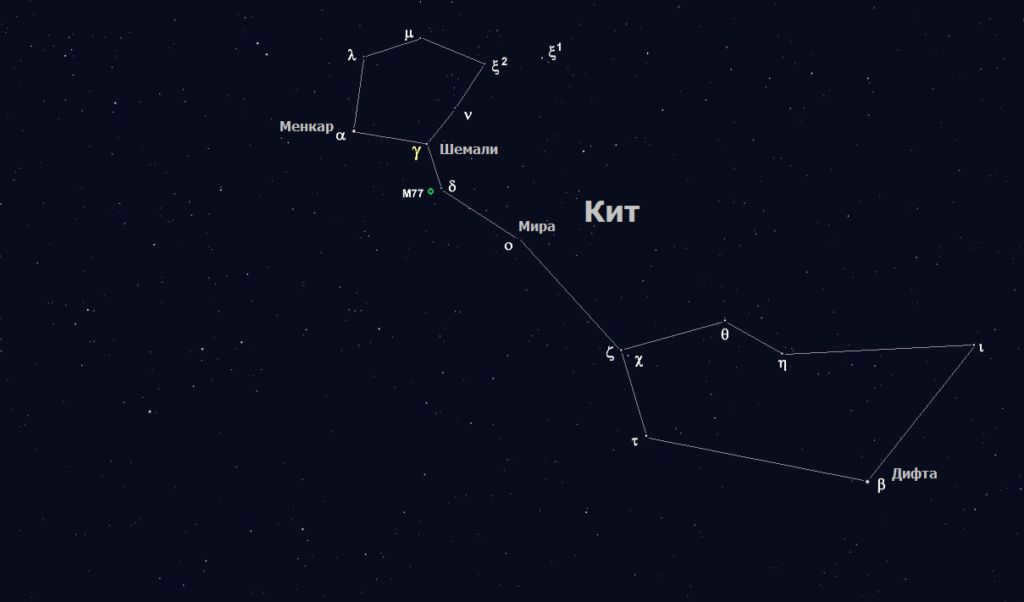
There are other stars in the constellation Keith
It is common knowledge that Kit is made up of numerous stars. For instance, orange giants such as Eta, Iota — Shemali, Theta, Zeta, and Ypsilon belong to Kita.
In addition, the multiple system belongs to the constellation Gamma, and Myu is actually a binary star.
The blue-white giants in this constellation are Delta, Xi-2, and Lambda.
Only Tau has been classified as a yellow dwarf.
It is quite fascinating that very few individuals choose to reside on rooftops, considering that the stars are much more visible from there compared to windows.
As stated by Astrid Lindgren in her book “The Kid and Carlson Who Lives on the Roof.”
Objects in the Sky
Scientists have discovered that within the Whale constellation, there exists an extraordinary celestial object known as Messier 77. Specifically, it is a spiral galaxy with a distinctive core, making it one of the largest entries in the astronomer’s catalog.
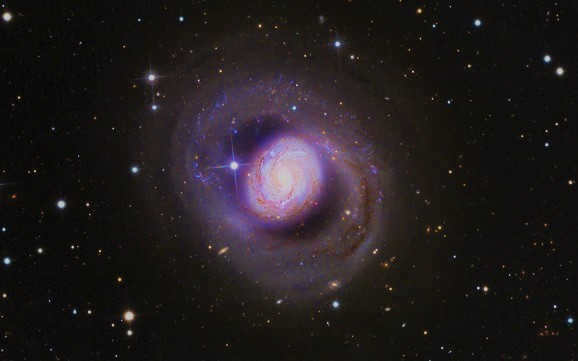
Interestingly, the Whale is home to numerous spiral galaxies. Some notable examples include NGC 1055, NGC 1087, NGC 1073, NGC 1042, NGC 247, NGC 45, and 17.
Furthermore, it has been discovered that 14 bright stars within the constellation have planets orbiting them.
But that’s not all. Surprisingly, Keith is also host to several meteor streams. In fact, it boasts three of them:
Due to its vast expanse, the constellation Kit is easily observable from southern and central Russia. It is worth noting that it is situated in the northern region.
Astronomers recommend October and November as the optimal months for observing this constellation.
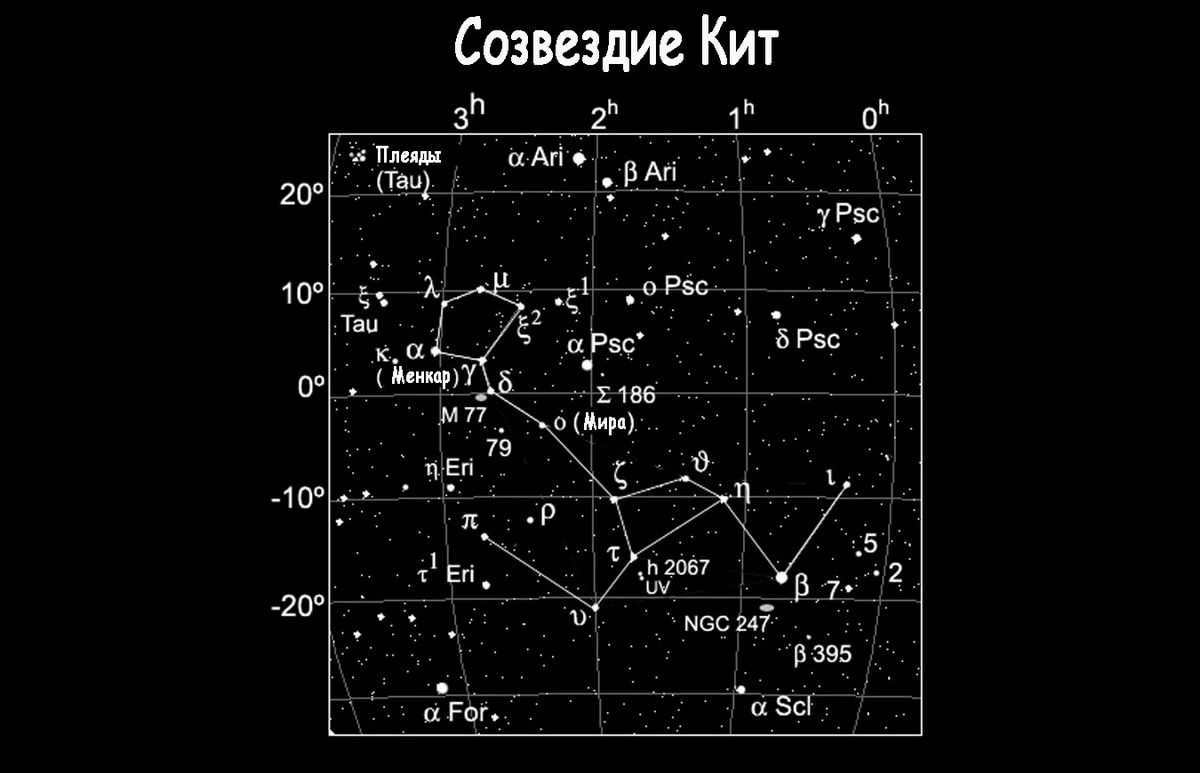
If there are no clouds and the night is without the moon, you can observe over a hundred stars in the constellation of the Whale. Out of all these stars, only nine are exceptionally bright (with a magnitude brighter than the fourth star) and are part of the constellation’s shape, forming a distinct and elongated chain. The Whale constellation starts in the east with a large elongated polygon and ends in the west with a significant triangle.
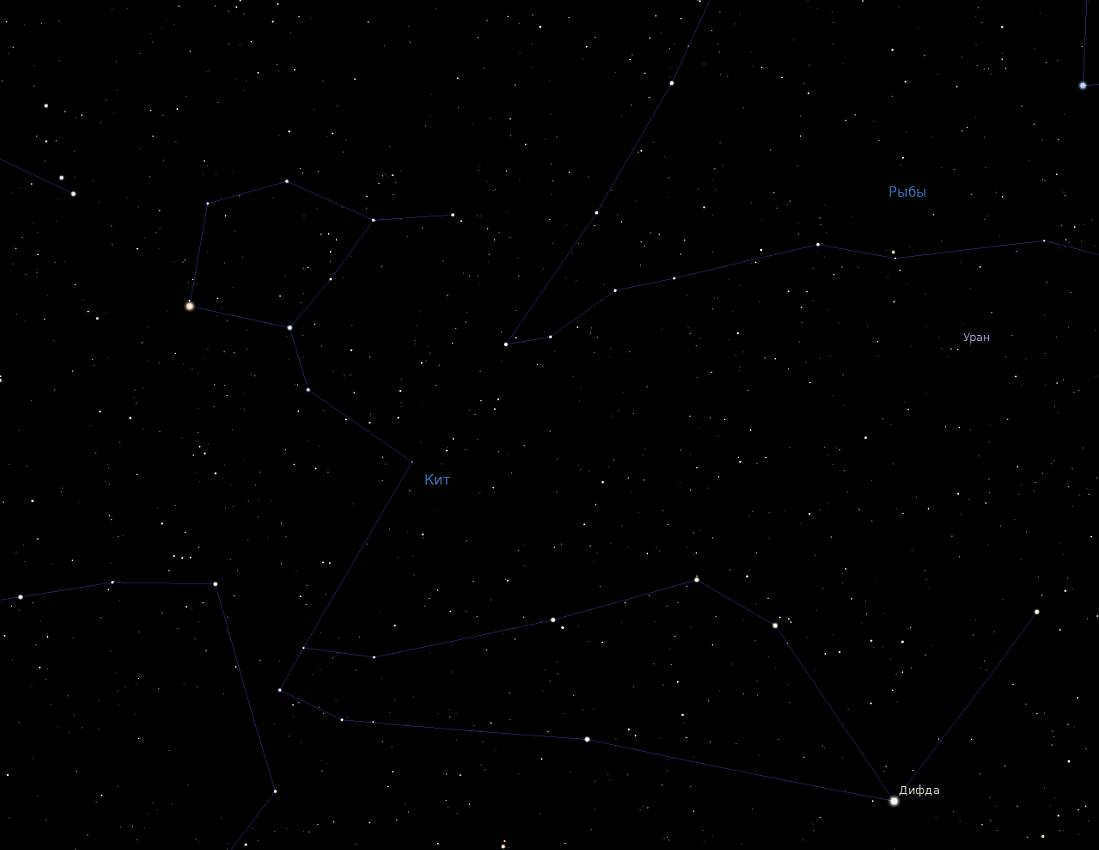

The constellation Whale is easily identifiable by a distinct broken line in its center, formed by the brightest stars. This unique shape has led to the depiction of the whale as a monstrous creature with a curved tail and a wide open mouth.
Fascinating items
Among the most dazzling celestial bodies that form the constellation of Kita are Alpha Kita and Beta Kita. They are alternatively known as Menkar and Diphda.
Mira

The appearance of Mira, captured in the ultraviolet range, resembles that of a comet.
One particularly fascinating celestial body is known as Mira. It has become the namesake for an entire class of variable stars known as the Mirids. Mira’s allure lies in its fluctuating brightness, which occurs over a period of 331.65 days.
Witness the captivating journey of the star Mira through space in this animated video.
During this cycle, Mira’s luminosity ranges from being one of the brightest stars, with a magnitude of 2.0m, to a mere 10m, rendering it so faint that it cannot even be discerned through binoculars.
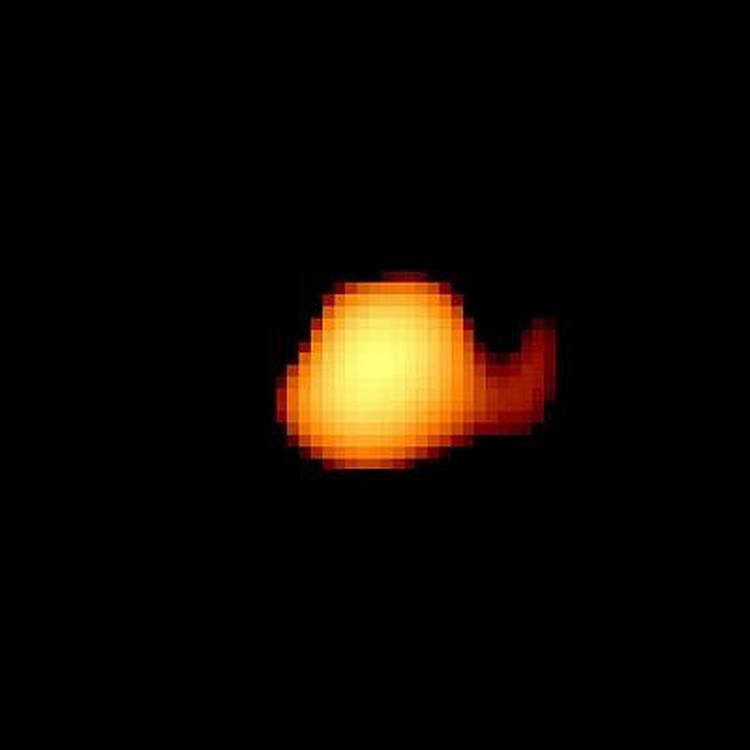
Omicron Keith, also known as Mira, is a celestial object with a fascinating phenomenon. The image shows the matter flowing over, resembling a tail on the right side, towards an unseen companion.
When Omicron Keith was first discovered, it came as a surprise that it was not included in any existing maps. However, after a careful observation spanning over fifty years, scientists realized that it is a long-periodic variable. Further studies and observations have revealed that Mira is a red giant star with an exceptionally low surface temperature, estimated to be around 2000K.
Let’s Know
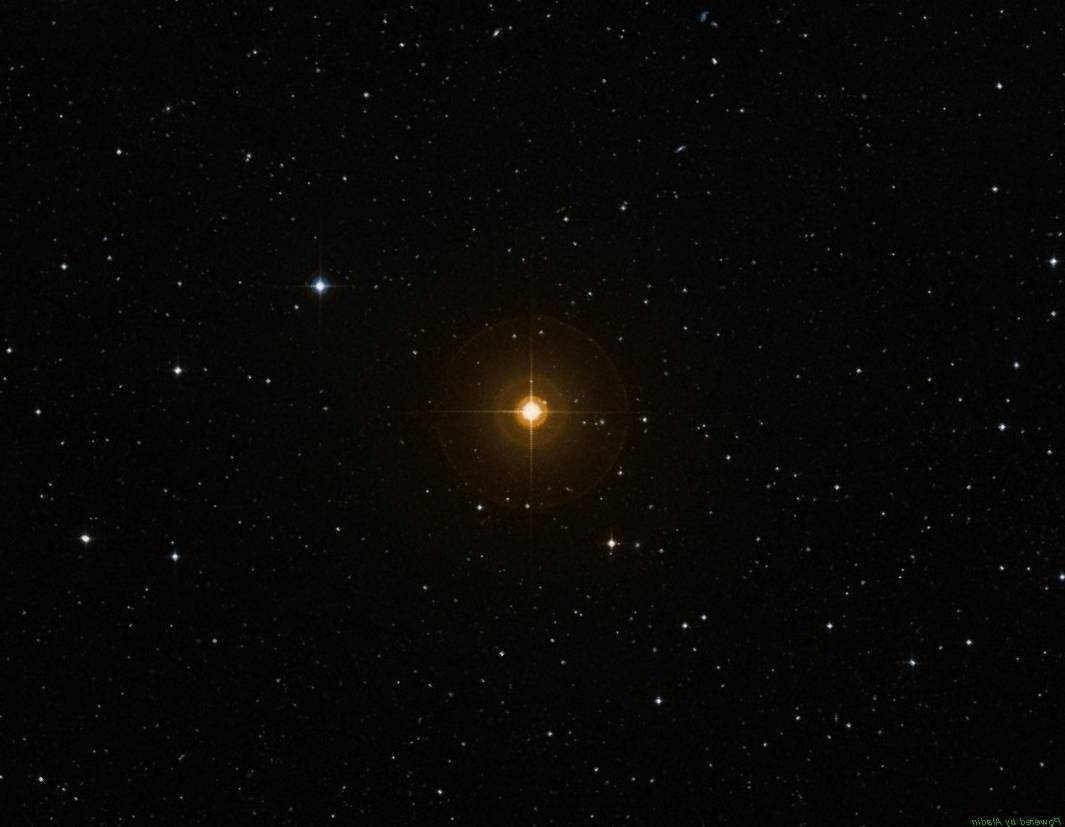
Tau Kita, the 17th closest star to Earth, is a variable star that shares many similarities with our Sun. This makes it a popular subject in science fiction.
In recent years, scientists have discovered the existence of five planets orbiting Tau Kita, raising the possibility of intelligent life. Telescopes have been directed towards the star in hopes of detecting any extraterrestrial signals, but so far, their efforts have been unsuccessful.
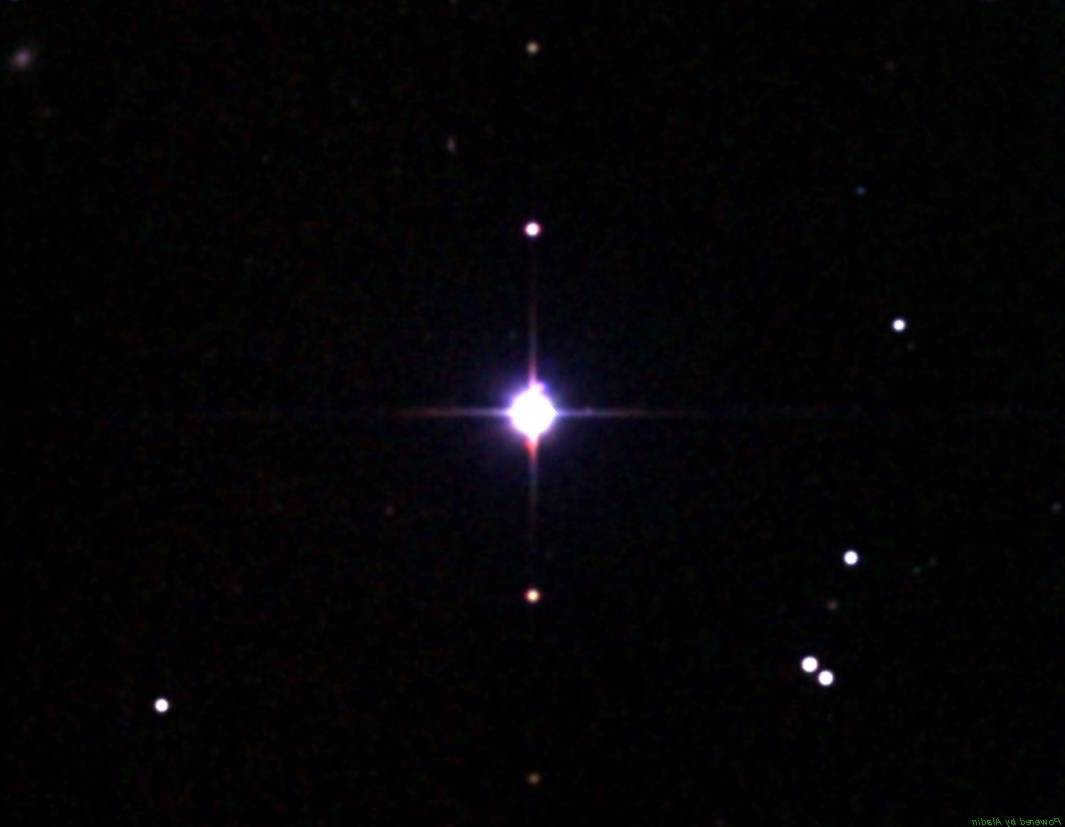
UV Kita or Gliese 65 is observable in the infrared band.
Within the constellation, there exists another celestial object that exhibits a significant fluctuation in its luminosity, capable of varying by five star magnitudes! This remarkable entity is known as UV Kita. It experiences a rapid dimming effect following intense bursts of energy. It is plausible that the flares observed on UV Kita bear a striking resemblance to the flares witnessed on our very own Sun. The only disparity lies in the scale of these solar eruptions, which are notably less colossal in comparison.
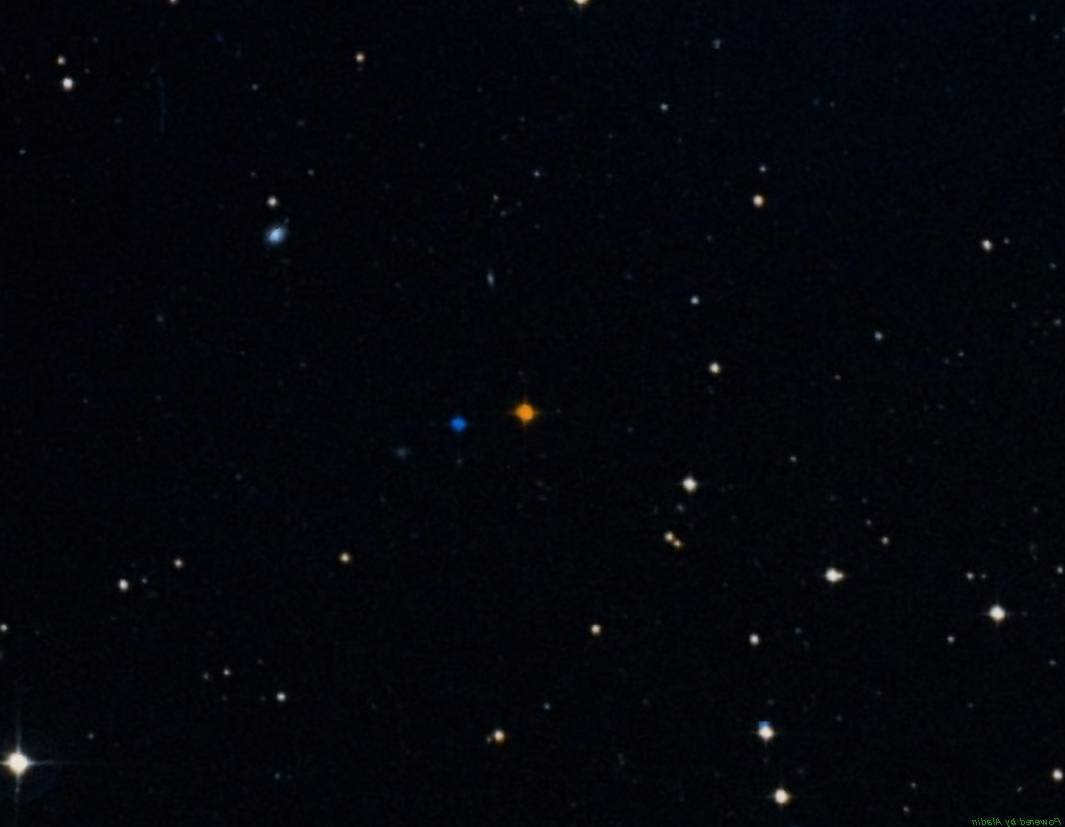
Photograph of UV Cetus in the visible spectrum
Of particular interest is the celestial body known as HD 11964, which has been observed to have three exoplanets. Positioned approximately 110 light years away, this star is not visible to the unaided eye.
Galactic Systems and other Celestial Bodies
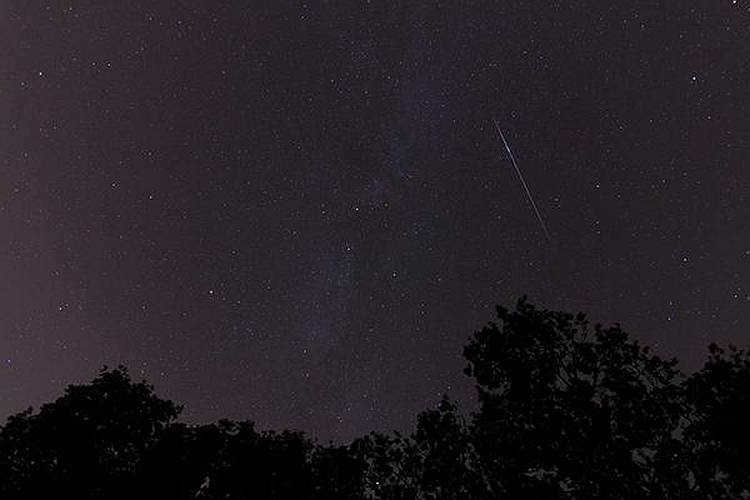
Picture of the Cetida Meteor stream
The radiant of the Cetid meteor stream can be found in close proximity to a star known as delta Kita. This particular radiant is typically observed during the month of October. In terms of its characteristics, it can be classified as a relatively weak stream, with only a few meteors being observed per hour at its peak. However, there are occasional periods of heightened activity, during which up to 100 meteors can be seen per hour.
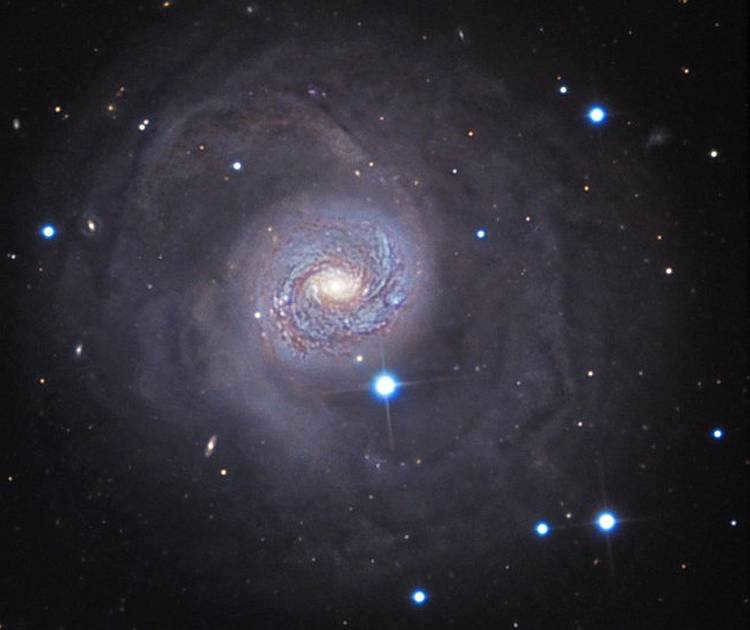
Upon closer observation, within the constellation, one can discern a notable spiral galaxy known as M77.
Embarking on a journey to the M77 galaxy
Chronicles
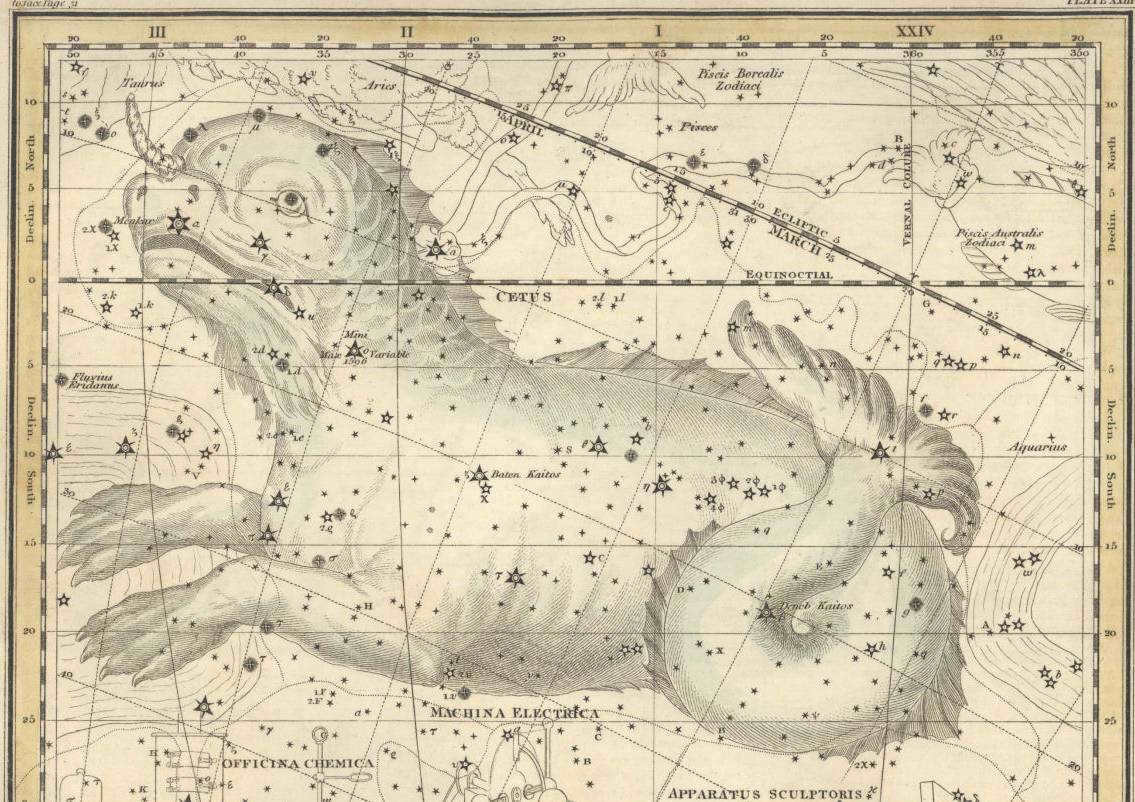

An ancient sky atlas contains a depiction of the constellation known as the Whale.
Delving into mythology, this celestial pattern symbolizes the monstrous creature that Poseidon dispatched to devour the beautiful Andromeda, who was bound to a rock. However, the beast failed to harm Andromeda and was ultimately vanquished by Perseus.
For amateur stargazers, locating the area of the night sky known as the “water region” is relatively straightforward. Within this region, one can find the constellations Pisces, Aquarius, and Eridanus. The Whale constellation is also situated here. Spanning a significant portion of the sky, this constellation is comprised of approximately one hundred visible stars on clear nights.
Place

Locating the whale constellation, known as Kita, is a relatively easy task for both children and adults. It can be easily spotted in the night sky, thanks to its bright stars and recognizable landmarks such as Orion and Taurus, which are situated in close proximity to the described constellation.
The Kita constellation is primarily visible in the southern hemisphere, with only a small portion crossing into the northern hemisphere. The best time to observe this constellation is in November. However, in our country, it can only be seen in the central and southern regions.
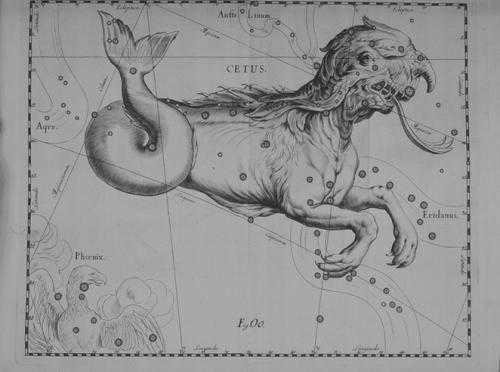
The most luminous
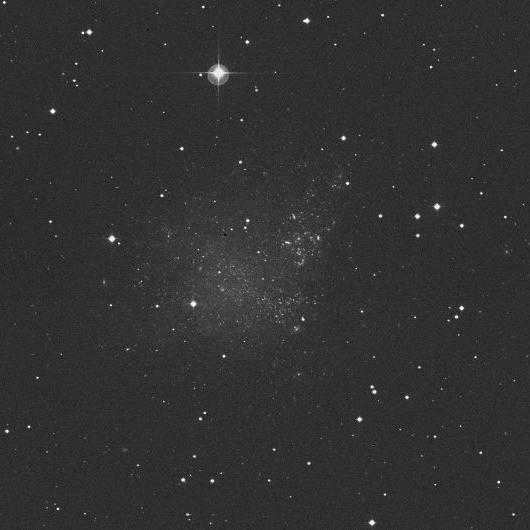
The Keith constellation possesses numerous fascinating characteristics. One notable aspect is that it is not always possible to determine definitively which star within its formation shines the brightest. Typically, the status of the most prominent luminaries is bestowed upon Alpha and Beta of the celestial pattern, with the latter being brighter than the former. However, on occasion, the Keith constellation is illuminated by bursts of Mira (Omicron Keith), but we will delve into this topic a bit later.
This group of stars is also known as Difda or Deneb Kaitos (whale’s tail). It is an orange giant in the final stage of its life cycle. Difda has a mass that is only three times larger than the Sun, but it shines 145 times brighter and has a diameter that is 17 times larger. This orange giant is situated 96 light-years away from Earth.
Keith’s constellation is home to a variety of captivating entities. Within its celestial boundaries, one can find the mesmerizing stars Omicron and Tau, which never fail to capture the fascination of countless stargazers, ranging from novice enthusiasts to seasoned experts.
Omicron Keith, previously mentioned, also goes by the name Mira, which translates to “marvelous”. It was first discovered by David Fabricius in 1596. This star belongs to the category of long-period variables, which are referred to as Mirids in its honor. These stars are characterized by their long periods of changes in luminosity. In the case of Mira, this period averages about 331.62 days. What’s fascinating is the wide range in which its magnitude varies, from 3.4 to 9.3 m. When it reaches its maximum brightness, Omicron Kita becomes one of the brightest stars in its constellation, but when it’s at its minimum, it becomes invisible even with binoculars. Moreover, the boundaries of this range can also shift: Mira has the ability to reach a magnitude of 2.0 m, making it the brightest star in the constellation. On the other hand, the lower boundary sometimes shifts to 10.1 m.
Duplicate
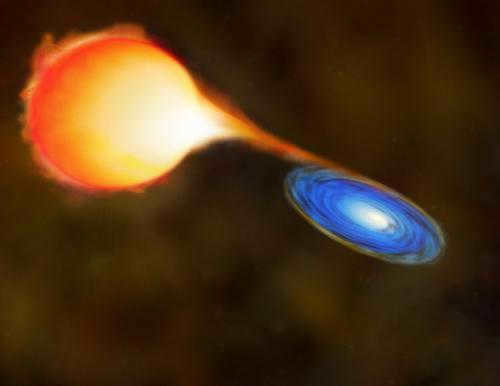

Mira is a binary star system with two stars, Mira A and Mira B, separated by a distance of 70 light-years. These stars have an orbital period of 400 years. Similar to Omicron Kita A, Mira B is a white dwarf star and also a variable star. It is surrounded by a disk of matter that flows from Mira A. This uneven flow of matter causes variations in Mira B’s brightness, ranging from 9.5 to 12 magnitudes.
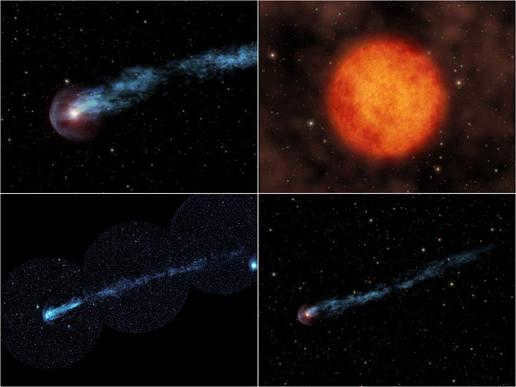
Mira lives up to its name, as it has managed to astonish astronomers after centuries of observation. In 2007, the GALEX telescope discovered a gas-dust tail of enormous proportions, spanning 13 light-years, which is three times greater than the distance from the Sun to Proxima Centauri. According to scientists, Omicron Keith loses mass equivalent to that of Earth every decade. The peculiar motion of the star causes the matter it sheds to be blown backwards.
Another remarkable property of Mira is its movement through space. Unlike most other stars, Mira travels in the opposite direction. It zooms through space at a speed of approximately 130 km/s, surpassing the cloud of interstellar gas that is hurtling towards it. This unique motion results in the formation of its tail.
Sun-like
Mira is not the only celestial object that embellishes the constellation. Tau Kita is equally renowned as a luminary in this celestial pattern. Among the stars that are closest to us, after Proxima Centauri and Epsilon Eridanus, Tau Kita holds the record (at a distance of 12 light years). What sets it apart is its resemblance to the Sun in several parameters. Like our own luminary, Tau Cetus is a yellow dwarf without any companions. It exhibits a slow rotation on its axis, which again links it to the Sun. This characteristic, however, is not typical for stars of their spectral class. In the case of the Sun, the sluggish rotation can be explained by the presence of a planetary system that shares its momentum with the luminary. Until recently, there were only speculative theories explaining the reason behind Tau Kita’s slow rotation.
Five celestial bodies
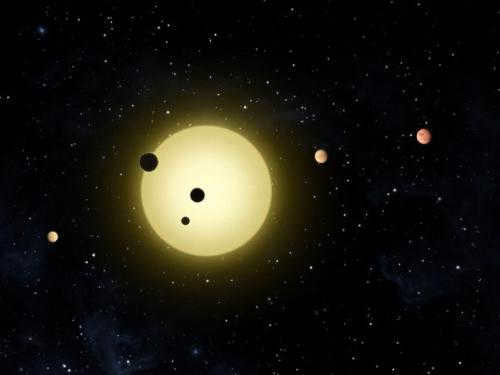
Keith constellation, often overlooked in horoscopes as it does not belong to the zodiac. Astronomers, unlike astrologers, believe that the stars of Keith can potentially play a significant role in the lives of all mankind.
In December 2012, the slow rotation of Tau Cetus was given a similar explanation to that of the Sun’s properties: the star was found to have five exoplanets. Since then, many specialists in the field of astronomy and astrophysics have turned their attention to this system. The reason being that at least two of the discovered exoplanets have the potential to be habitable, and therefore could potentially be inhabited.
Features and Circumstances
With a mass over three times that of Earth, the fourth planet orbiting Tau Kita completes one revolution around the star in 168 days. The fifth object in the system, on the other hand, takes approximately 640 days to complete its revolution. Although the available data does not provide a definitive understanding of the temperature conditions on these celestial bodies, scientists hypothesize that the climate on these planets could potentially support life.
The situation, though, is not as straightforward: the Tau Cetus system, unlike the Solar System, boasts a vast multitude of asteroids and comets. In this aspect, it surpasses our corner of the Galaxy by approximately 10-fold. In such circumstances, planets must endure constant collisions with substantial objects akin to the meteorite believed to have led to the extinction of the dinosaurs. Hence, it is highly likely that life, should it exist on the planets of Tau Kita, is in a nascent stage.
Nevertheless, there is still a need for verification and a more meticulous examination of all this data. Currently, the Kita constellation remains an area where a star is radiating with planets that have the potential to support life. Scientists are steadfast in their pursuit of finding proof of life on these celestial bodies, which is why they continuously aim a radio telescope towards Tau Kita, hoping to intercept any potential signals from an extraterrestrial civilization dwelling there.

The whale constellation has become a symbol of hope and the future, which is why some companies are named after it, such as the Center “Constellation of the Whale” in Novosibirsk, Russia.
Within this celestial pattern, there are not only fascinating stars, but also numerous galaxies and nebulae. The entirety of the Keith constellation, including its stars, galactic clusters, and other elements, is of great interest to scientists. Amateur astronomers also recognize its value in studying celestial bodies, as their contributions cannot be overstated.
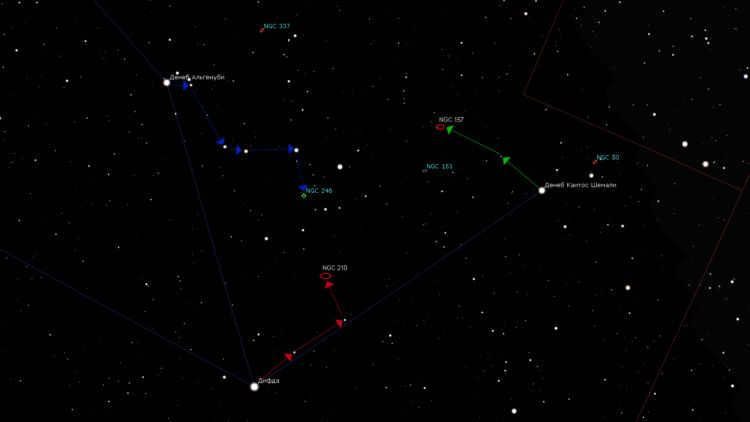
- Constellations
Cetus (Latin: Cetus, Cet) is a celestial formation situated in the area of the sky known as the “water” region. It is in close proximity to the constellations Aquarius, Eridanus, and Pisces. This particular constellation can be seen in its entirety from central and southern parts of Russia. The most favorable conditions for observation are during the months of October and November.
| Whale | |
| Scientific name | Cetus |
| Abbreviation | Cet |
| Symbol | whale |
| Direct ascent | 23 h 50 m to 3 h 17 m |
| Declination | -25° 30' to +9° 55' |
| Area | 1231 sq. deg. (Ranked 4th) |
| Brightest stars (with magnitude < 3 m ) | Difda (β Cet) – 2.04m Menkar (α Cet) – 2.54m Mira (ο Cet) – 2.0-10.1m |
| Meteor streams | October Cetids Eta-Cytids Omicron-Cytids |
| Neighboring constellations | Taurus Eridanus Aries Pisces Aquarius Furnace Sculptor |
| This constellation can be seen at latitudes ranging from +65° to -80°. The optimal time for observation is in October. | |
The constellation of the Whale is only visible in central and southern regions of Russia, while it cannot be observed in the rest of the country. October is considered the optimal time for its observation. Surrounding the constellation of the Whale are Taurus, Eridanus, Aries, Pisces, Aquarius, Oven, and Sculptor. Among its brightest stars are Menkar and Difda.
The Story and Background

Claudius Ptolemy’s Almagest contains the constellation Kit in its catalog of the celestial sphere. In ancient times, the whale was envisioned as a creature with the paws of a dog, guarding the golden fleece in the sacred grove of Ares.
According to one myth, the whale, sent by Poseidon, was meant to devour Andromeda, who was chained to a rock. However, Perseus, using the head of Medusa Gorgon, turned the whale to stone and saved the beautiful girl. There is a variation of the myth that claims a dragon was assigned as the eater of maidens, but the whale version is much more plausible. Just take a look at the illustration of this creature in Jan Hevelius’s atlas, and you will immediately realize that there is nothing more to expect from him!
The whale’s skeleton was transported to Rome in the 1st century BC by Marcus Aemilius Scaurus, a Roman consul. Precise measurements were taken by meticulous Roman naturalists: the length of the skeleton was 40 feet or approximately twelve meters, and the vertebrae had a circumference of six feet or about 60 centimeters in diameter. Later on, in the late 5th or early 6th century, St. Jerome encountered the remains in the Phoenician city of Tyre. It is believed that the Romans, having satisfied their curiosity, returned the bones of the monstrous creature at that time.
The primary celebrities of the star pattern known as Kit
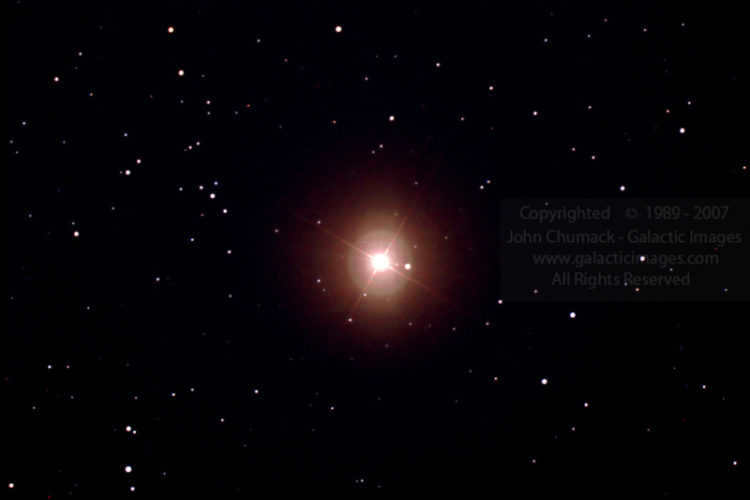
- DenebCaitos (also known as Difda or Beta Kita) is currently undergoing a transformation from an orange giant to a red giant. This star, classified as a K0 III spectral type, has a surface temperature of 4800 K, making it slightly cooler than the Sun. It is the brightest star in the constellation and has an apparent visual magnitude of 2.04. Located at a distance of 96.3 light years, Deneb Kaitos has traditional names derived from Arabic phrases. “Deneb Kaitos” translates to “the southern tail of the whale” and “Difda” means “the second frog” (referring to the star formation in South Fish, which is known as the first).
- Mencar (Alpha Whale) is a remarkably ancient red giant located 249 light-years away. It is currently expelling its outer layers and forming a planetary nebula, which will eventually leave behind a sizable white dwarf. With an apparent visual magnitude of 2.54, the star derives its name from the Arabic word “nostrils.” Interestingly, Mencar is frequently featured in science fiction, such as the Star Trek movie series.
- Mira (Omicron Kita) is a binary star system consisting of a red giant and its companion. Situated 420 light years away, this stellar pair offers a mesmerizing sight.
- Mira B – a white dwarf with a high temperature, is in a symbiotic relationship with a red giant, where it is actively accreting mass. This pair of stars is the closest to the Sun. Mira B is the brightest periodic variable star, and it can only be observed with special equipment during certain stages of its cycle. It has a rotation period of 332 days.
The variability of Mira B was first documented by German astronomer David Fabricius in 1596. He initially believed it to be a new discovery, but later realized he had observed it before in 1609. The credit for determining the star’s variation cycle is officially attributed to astronomer Johannes Holwerd. The star was named by Polish astronomer Jan Hevelius, with the name translating from Latin as “marvelous.” Mira B also produces a trail of material, with NASA’s Galaxy Evolution Explorer space telescope capturing a tail that stretches 13 light-years long.
- Tau Kita is a G8.5 type dwarf star that emits a cold temperature. It has a magnitude of 3.5 and is located relatively close to our solar system, at a distance of 11.9 light years. Despite its proximity, Tau Kita has a mass that is only 78% of the mass of our Sun. This unique characteristic allows it to be one of the few stars that is smaller than our Sun yet still visible to the naked eye. Additionally, Tau Kita has a low metallicity and has a luminosity that is only 55% of the solar luminosity.
- In the past, there were two neighboring stars, Tau Cetus and Epsilon Eridanus, that were similar to our Sun. These stars were selected in 1960 as test subjects for a SETI experiment, which aimed to search for signs of extraterrestrial life. Unfortunately, no positive results were obtained from this experiment.
The celestial entities of the constellation Keith
Spiral galaxy M 77 (NGC 1068 or Whale A)
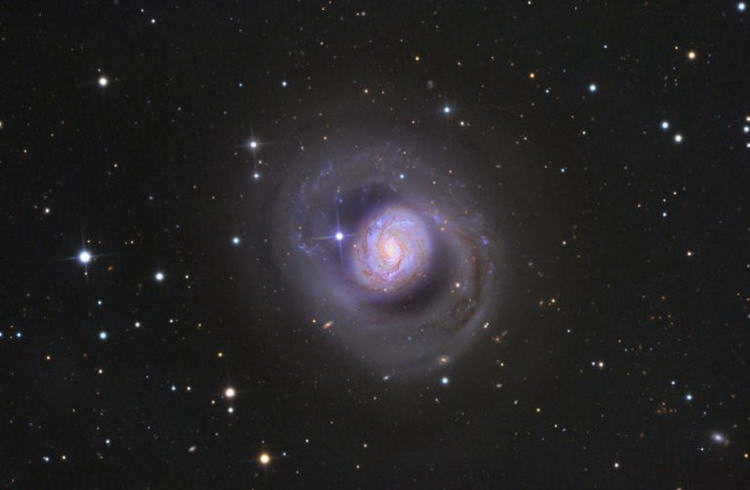
M 77 or Keith A is classified as a spiral galaxy of the Sb type. With a size exceeding 170,000 light-years, it is considered one of the largest galaxies included in the Messier catalog. The galaxy has a brightness magnitude of 8.9 m and an apparent size of 7.1′ × 6.0′. When observed through an amateur telescope, the core of M 77 or Keith A appears vibrant, with clearly visible spiral arms.
There are a number of other neighboring galaxies that can be observed through a non-professional telescope.
NGC 1055 Spiral Galaxy
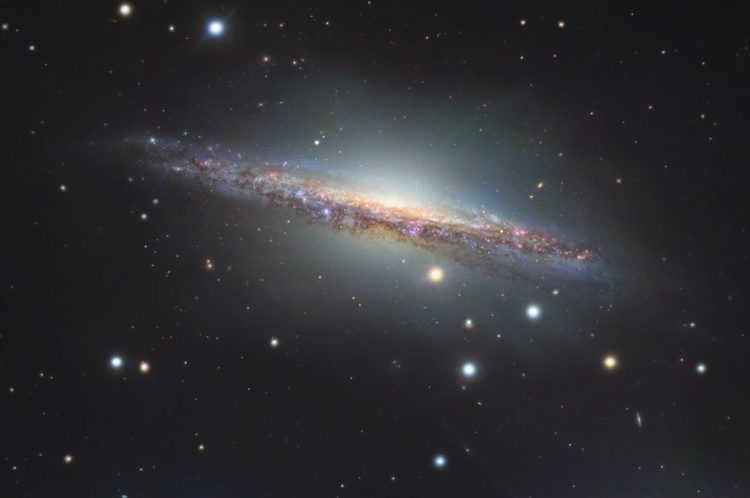
NGC 1055 is a spiral galaxy that has an SBb-type junction and is positioned in such a way that it appears edge-on to us. With a brightness of 10.6 m, it has an apparent size of 7.6′ × 2.7′. This galaxy has been the subject of much study by the Hubble Space Telescope. However, amateur astronomers who observe it from Earth will only be able to see a few details, such as its shape, size, and a dark band of gas and dust that runs through its central region. Typically, astronomers seek out and observe this galaxy when it is paired with M 77.
NGC 1087 and NGC 1090: A Fascinating Duo of Spiral Galaxies
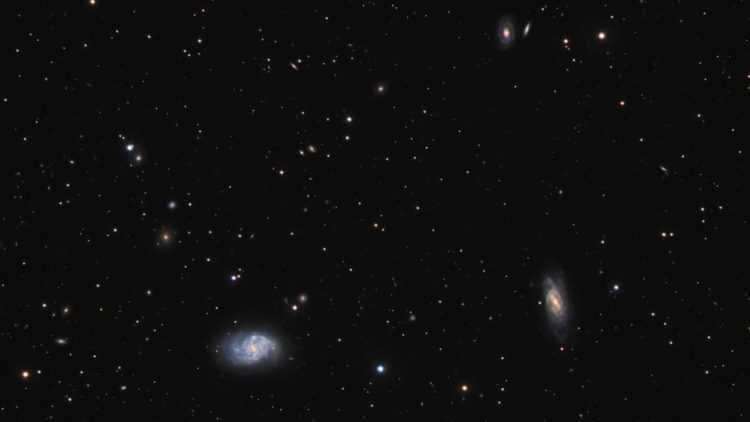
Take a moment to observe the image above and count the number of galaxies you see! The beauty of the universe is truly mesmerizing, and while it may not be possible to see all the galaxies through a telescope, two specific galaxies stand out – NGC 1087 and NGC 1090.
NGC 1087, the brighter spiral galaxy, is approximately 3.9′ × 2.3′ in size and has a brightness of 10.8 m. When observed through a 10-inch telescope, you can not only see the nebular cloud but also distinguish the galaxy’s spirals and the intricate structure at its periphery.
The spiral galaxy NGC 1073
The spiral galaxy NGC 1073 is a stunning celestial object that captivates astronomers and space enthusiasts alike. With its beautiful spiral arms and intricate structure, NGC 1073 is a fascinating subject of study for scientists.
NGC 1073 is located approximately 55 million light-years away from Earth in the constellation Cetus. It is classified as a barred spiral galaxy, which means it has a bar-shaped structure in the center of its disk.
The galaxy’s spiral arms are adorned with countless stars, gas clouds, and dust, creating a mesmerizing visual display. These arms are believed to be the result of density waves traveling through the galactic disk, causing material to clump together and form stars.
The central bar of NGC 1073 is thought to play a crucial role in the galaxy’s evolution. It helps to funnel gas and dust towards the galaxy’s center, fueling the formation of new stars and providing the necessary ingredients for the growth of a supermassive black hole.
NGC 1073 also boasts a bright nucleus, which is believed to be powered by a supermassive black hole at its core. This black hole is thought to have a mass millions of times that of our sun and emits vast amounts of energy as it consumes surrounding matter.
Studying NGC 1073 allows scientists to gain valuable insights into the processes that shape galaxies and the role of black holes in their evolution. Its unique features and distant location make NGC 1073 a captivating subject for astronomers and a source of wonder for all who gaze upon it.
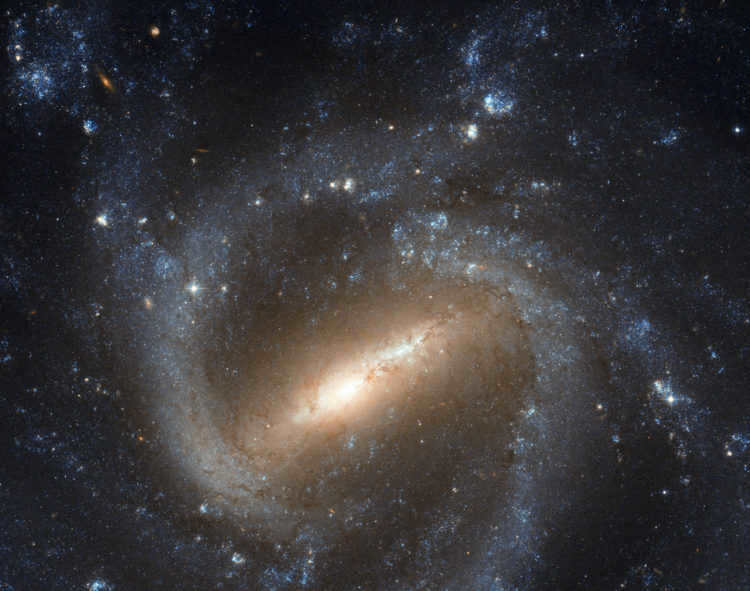
An image of the barred spiral galaxy NGC 1073, located in the constellation of Cetus (The Sea Monster), has been captured by the NASA/ESA Hubble Space Telescope. NGC 1073 shares characteristics with our own Milky Way galaxy, which is also a barred spiral, making it a valuable subject for astronomers studying our cosmic habitat.
NGC 1073 is a stunning example of a spiral galaxy with a SBc-type barred spiral structure. It measures 4.9′ × 4.3′ and has a brightness of 10.8 m. This galaxy is facing towards us, making it an ideal target for astrophotography enthusiasts.
NGC 936: A Fascinating Lenticular Galaxy
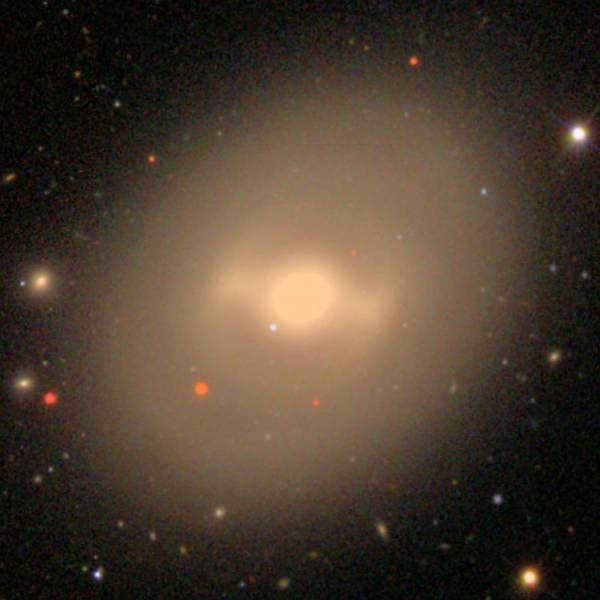
Following the preceding lenticular galaxy, NGC 936 may appear unremarkable and understated. However, upon closer examination, a diverse composition is uncovered within the central region of the galaxy, whereas the outer regions exhibit a consistently dull and hazy appearance. The galaxy’s luminosity measures 10.2 m, with an apparent size of 4.7′ × 4.1′.
NGC 864, a stunning spiral galaxy
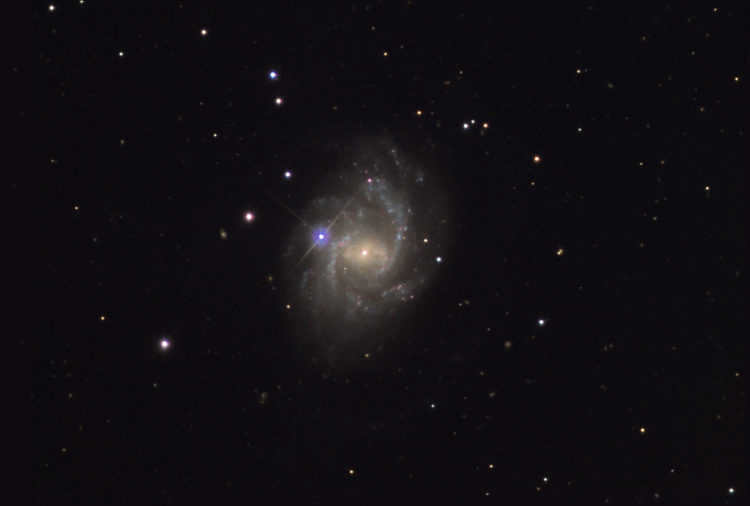
There is another spiral galaxy called NGC 864 in the northern part of the constellation Keith, which is situated separately from other celestial objects. It has a brightness of 11 m and an apparent size of 4.7′ × 3.5′.
The bright star visible in the foreground is not part of the galaxy and is only visually aligned with it from the perspective of an observer on Earth. Due to its low surface brightness (14 m), the galaxy appears very faint to the naked eye, and even its spiral arms are hardly discernible. Astrophotography, however, can capture more details and reveal various color shades.
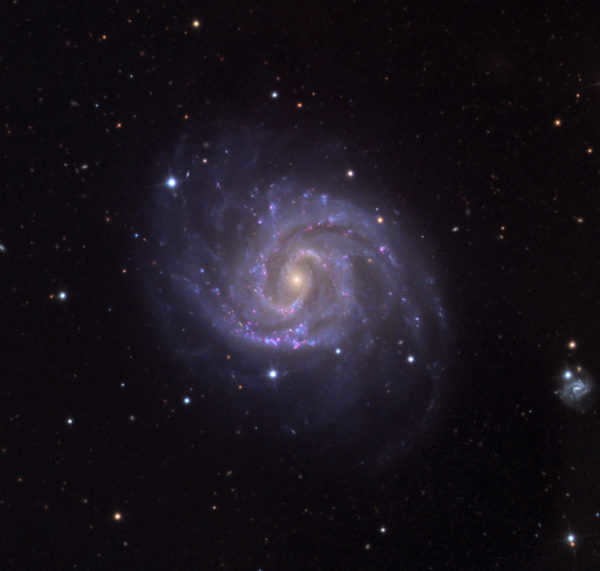
In the constellation Whale, there is another part that is filled with a large number of galaxies. When you search for one galaxy through the telescope, you will discover another one or even several more nearby. However, let’s begin by getting acquainted with a spiral galaxy called NGC 1042. Despite its dim brightness (11 m), it is facing towards the Earth and has a sufficiently high surface brightness (12.6 m) to allow for the observation of its spirals and other features. Its apparent size is 4.3′ × 3.6′.
The best approach to finding a pair of galaxies is to start from a bright star in the nearby constellation Eridanus and move clockwise. By the way, you will also have the opportunity to observe another stunning galaxy called NGC 1084 at the same time.
NGC 988: A Magnificent Spiral Galaxy
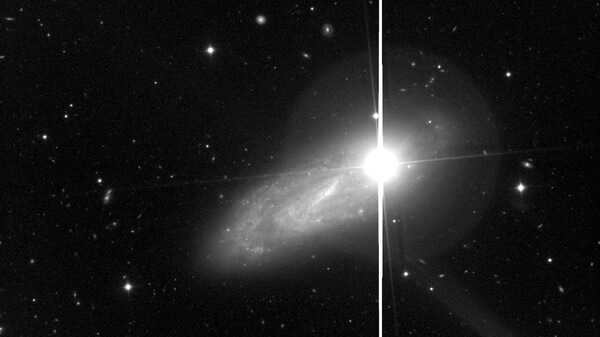
Located slightly south of the previous pair of galaxies is the spiral galaxy NGC 988. Acting as a useful guide for searching and observing, the foreground boasts a bright star with a luminosity of 7.1 m. The image above captures the star’s radiance. When viewed through a telescope, however, the star’s light does not overpower the galaxy but rather aids in identifying its position.
Measuring at a modest size of 4.1′ × 1.6′, the galaxy itself has an apparent magnitude of 11 m.
The duo of galaxies NGC 584 and NGC 586
NGC 584 (the more luminous one) is an elliptical galaxy of E4 type with a magnitude of 10.5 m and an apparent size of 4.1′ × 2.0′. Adjacent to it (only optically) lies the spiral galaxy NGC 586, which has a magnitude of only 13th and cannot be observed even with amateur 150-mm telescopes.
Both galaxies are located within a two-degree distance from the bright star θ Cet (3.6 m). In more advanced telescopes or during astrophotography, a camera can capture around a dozen other stars that are less bright. Similar to the Cetus 1 cloud, there are approximately 30 galaxies present here, with a maximum stellar magnitude of 14th.

